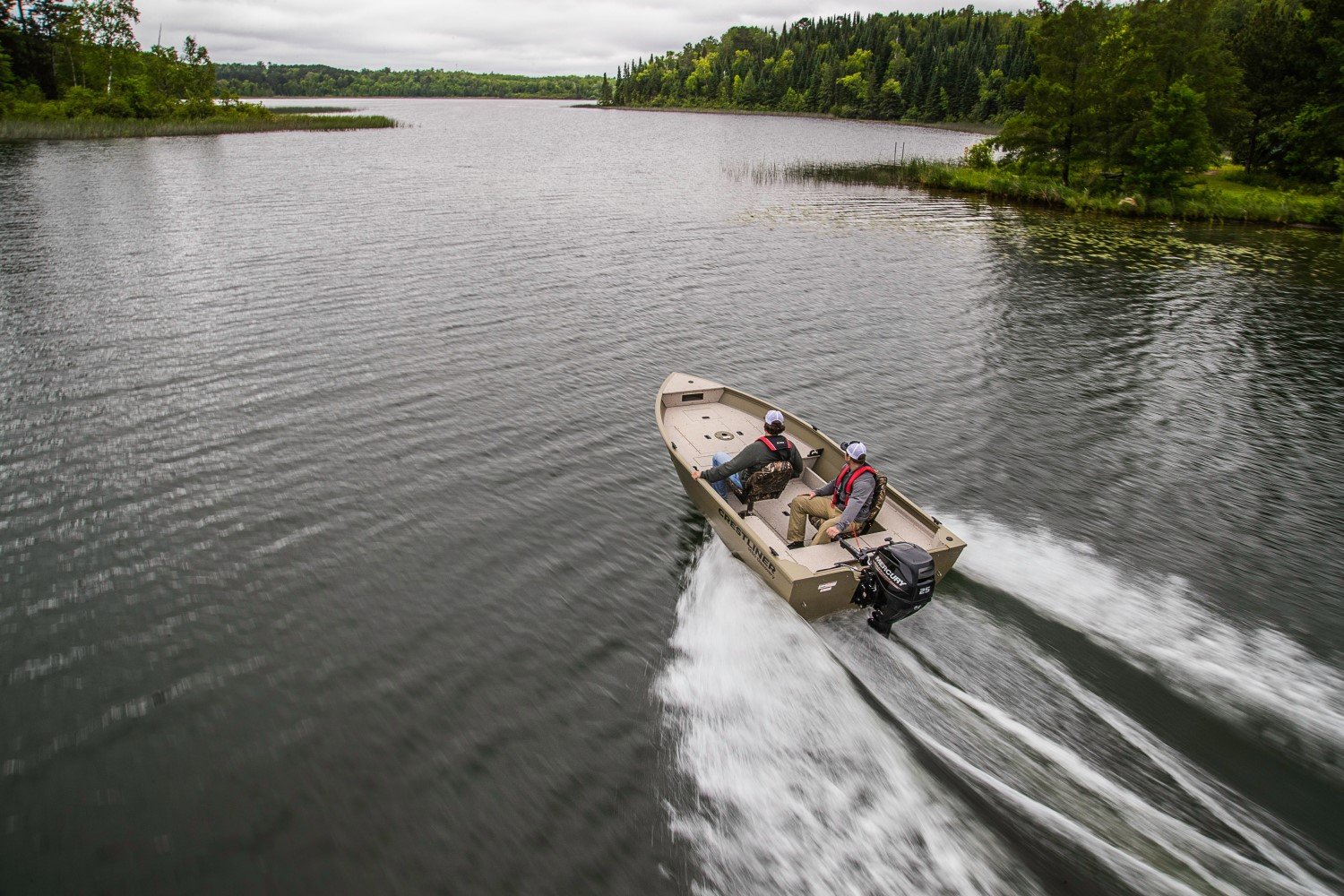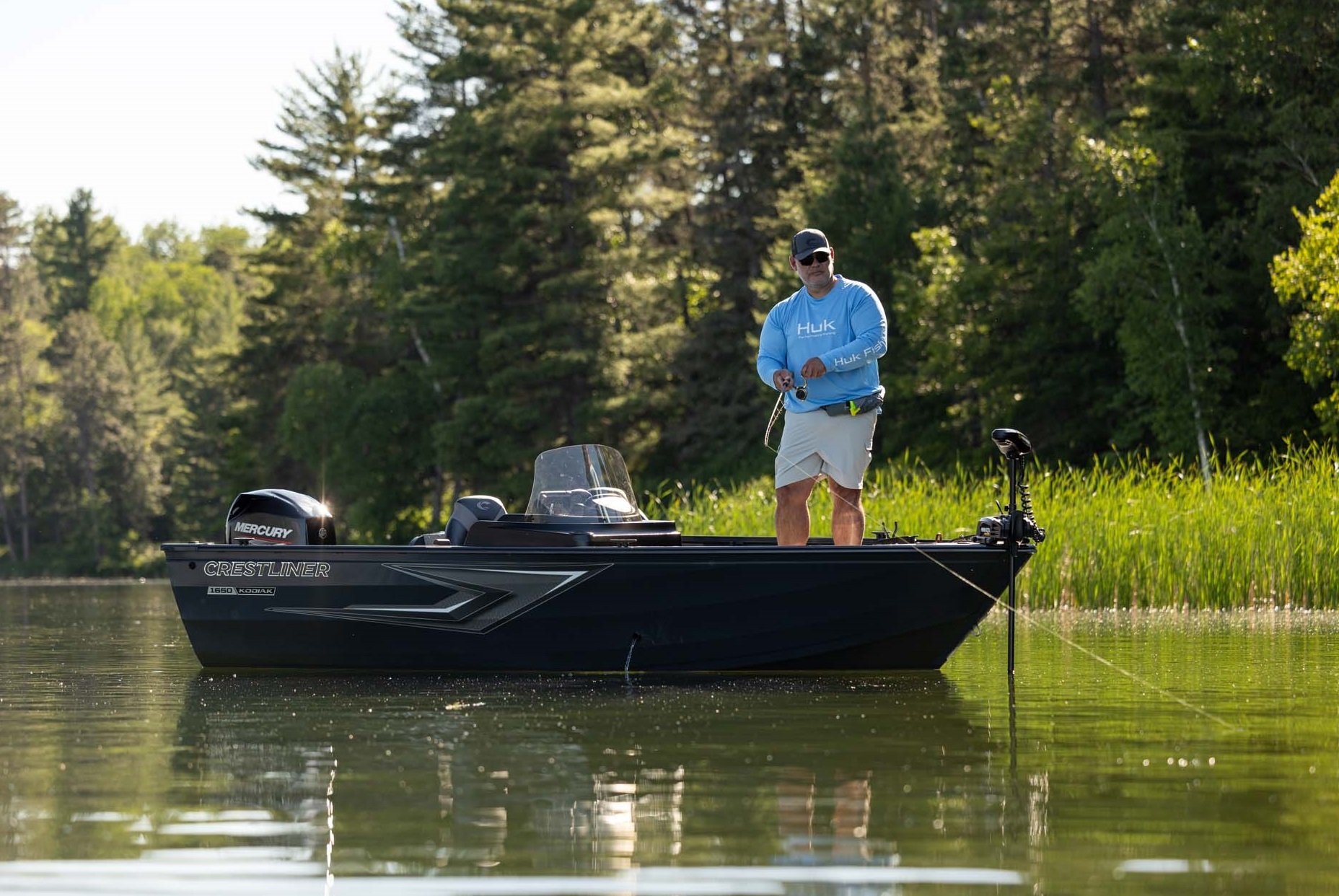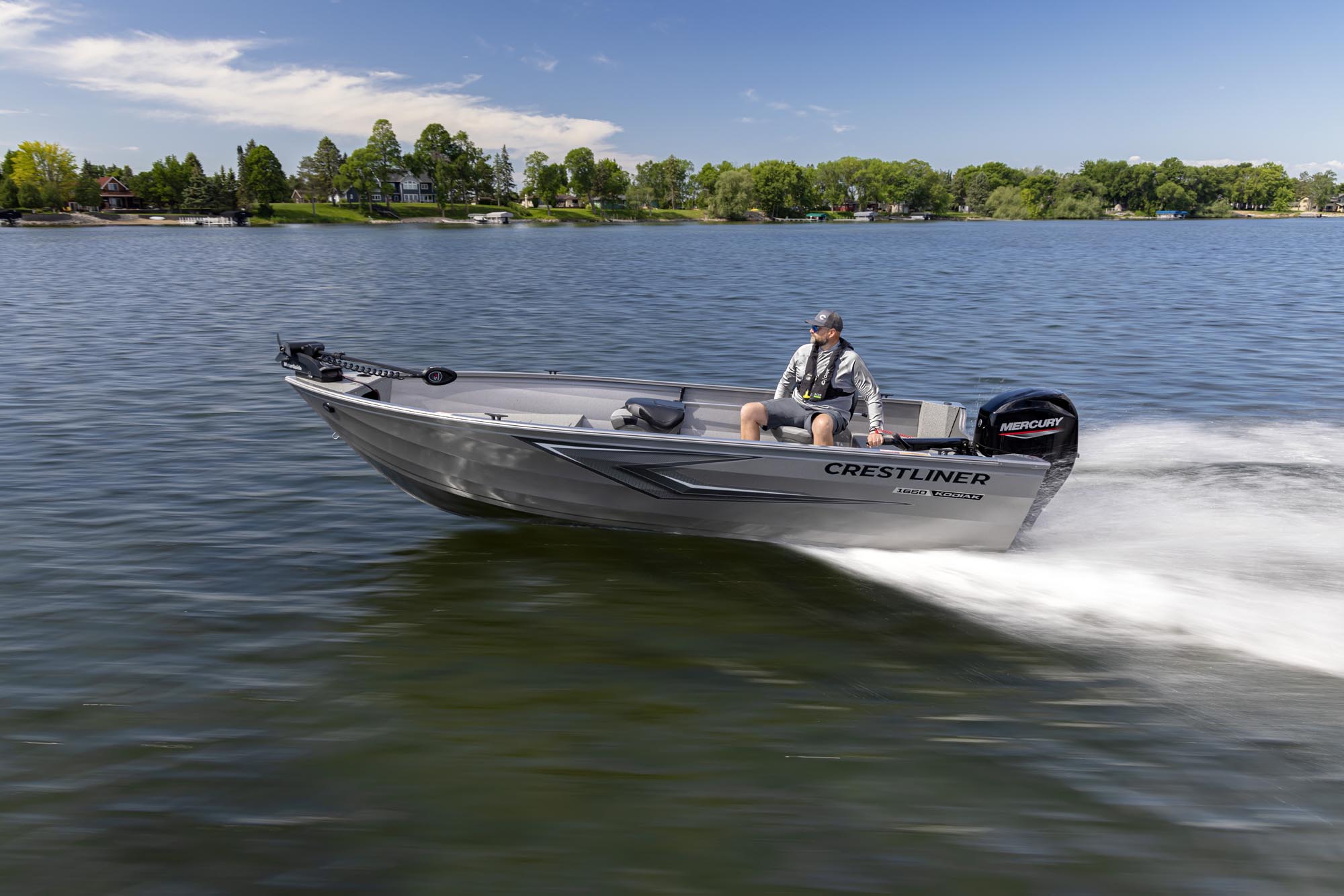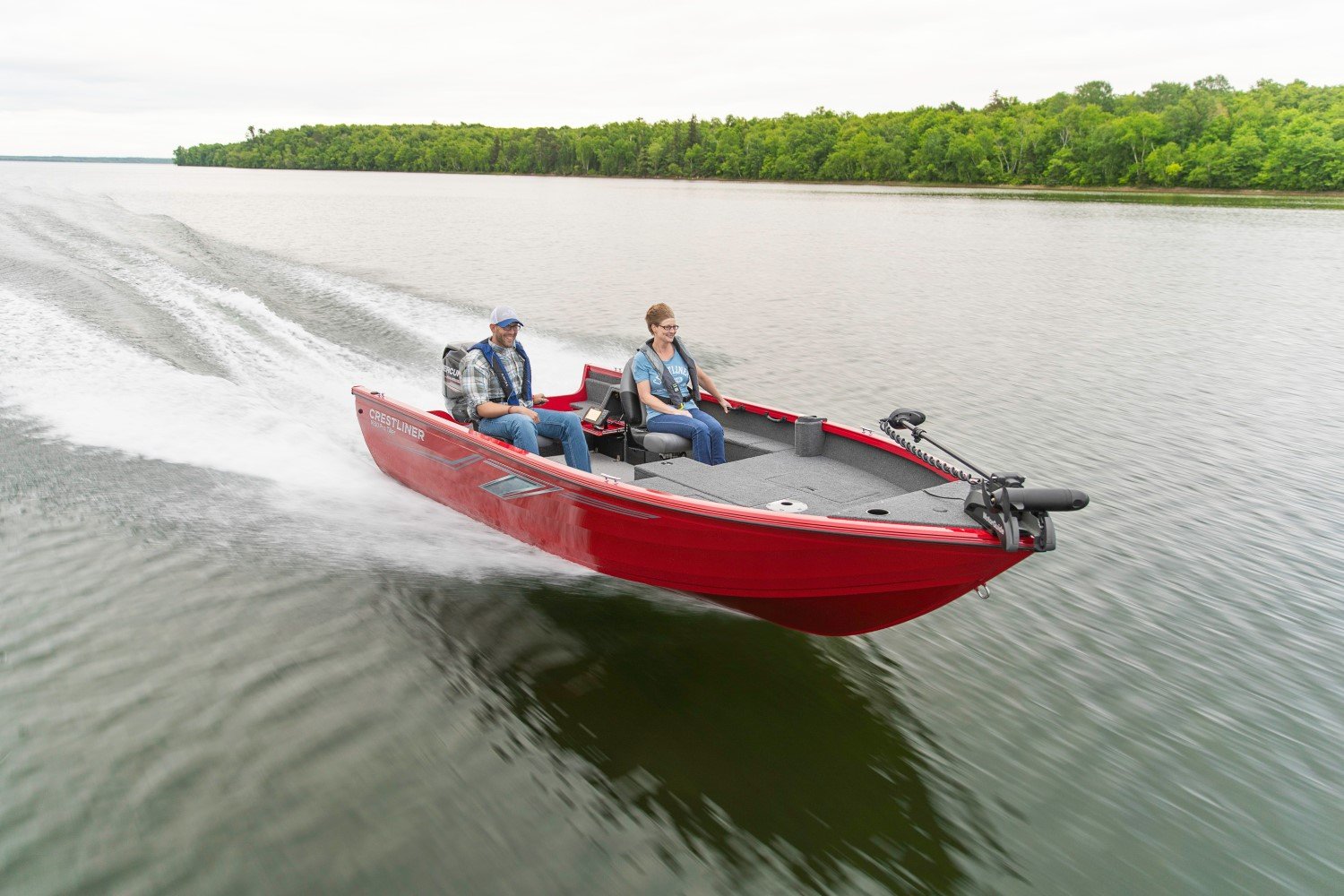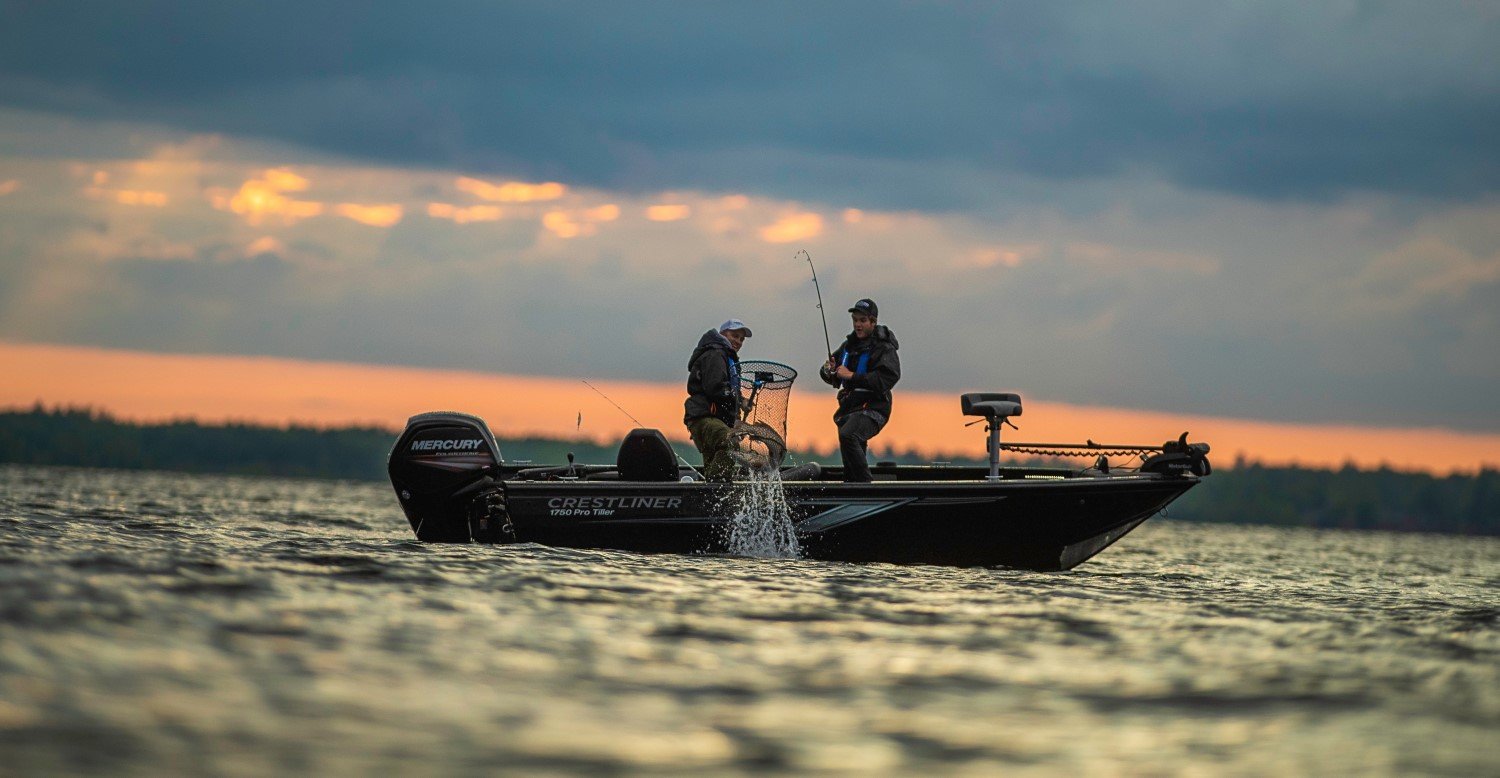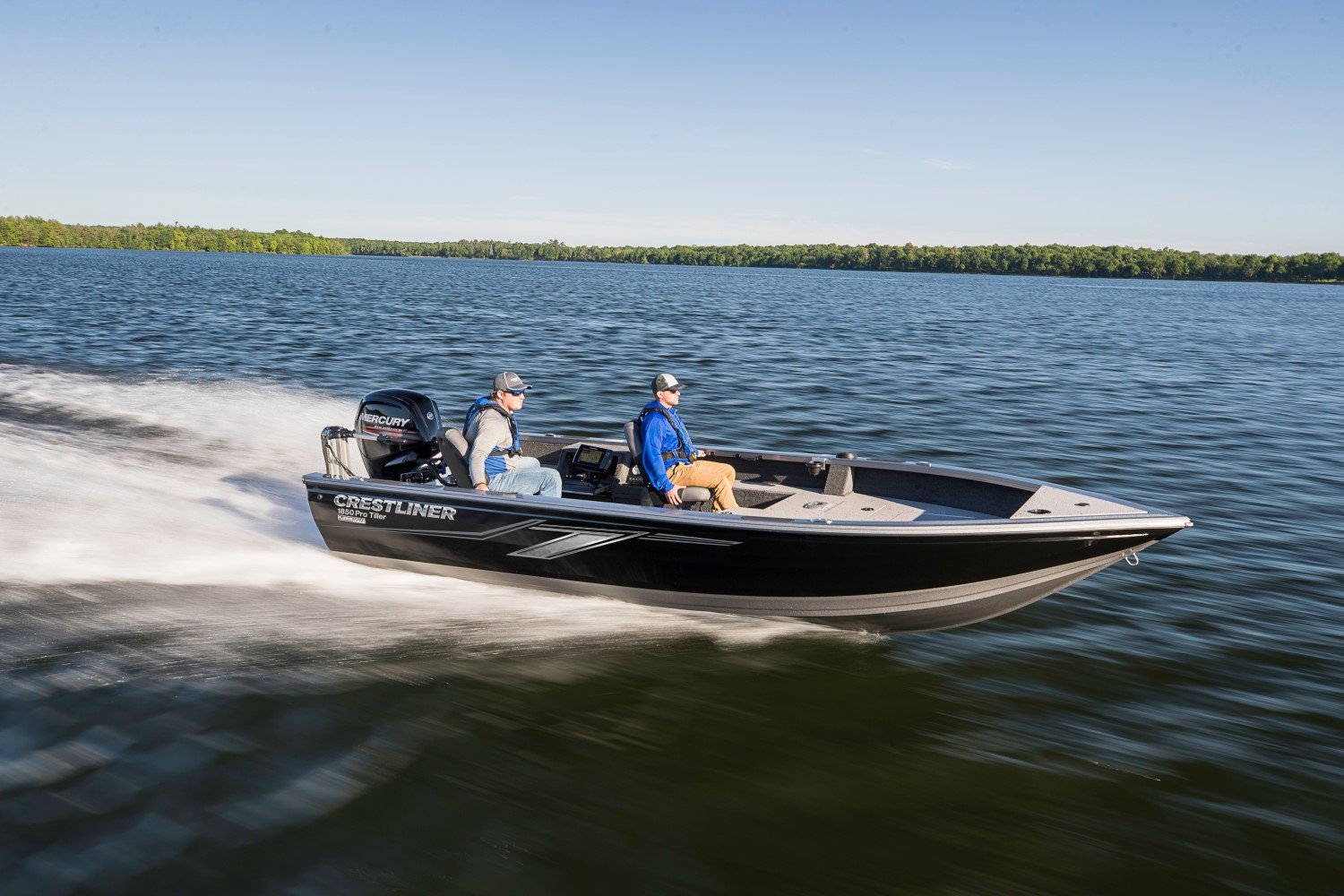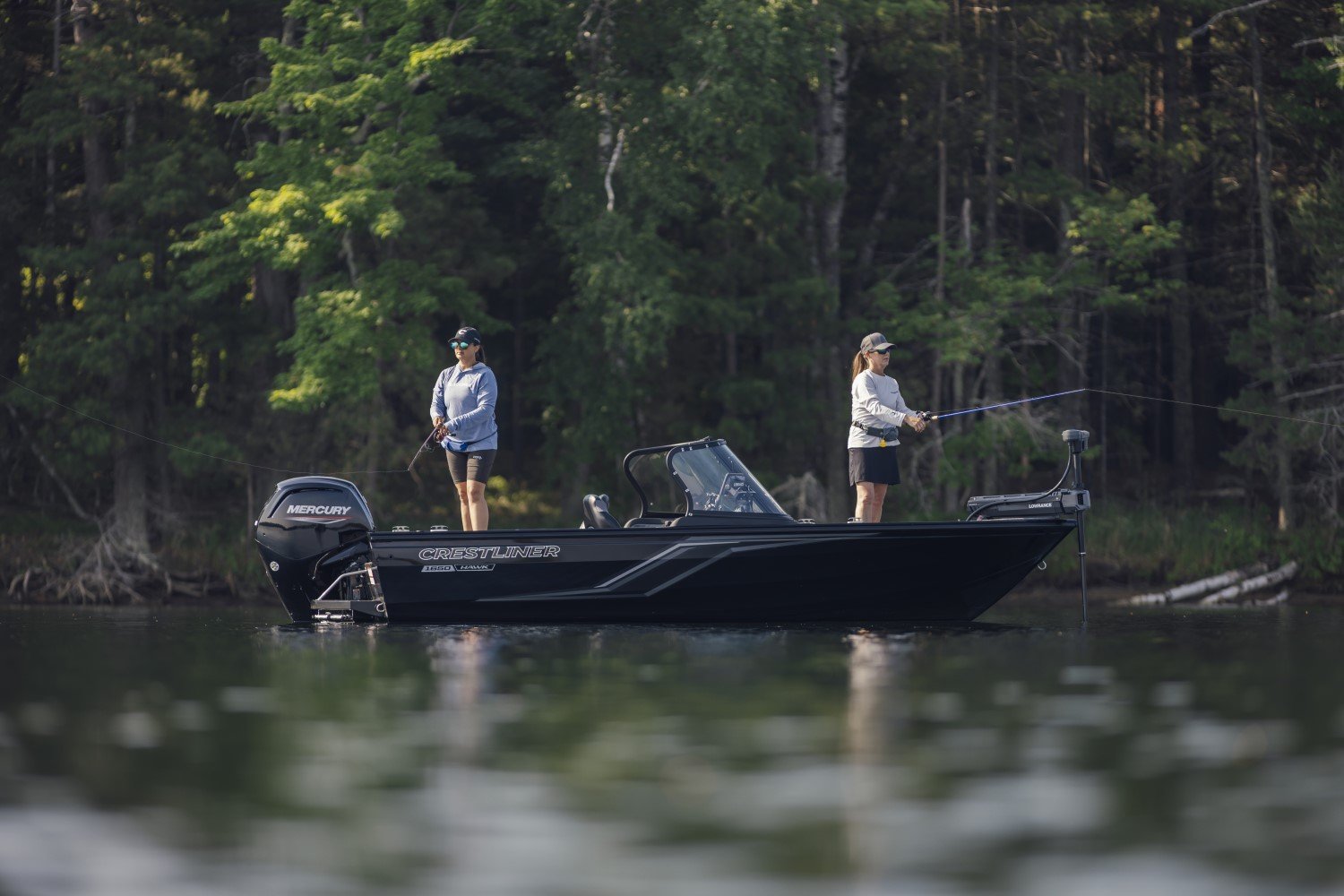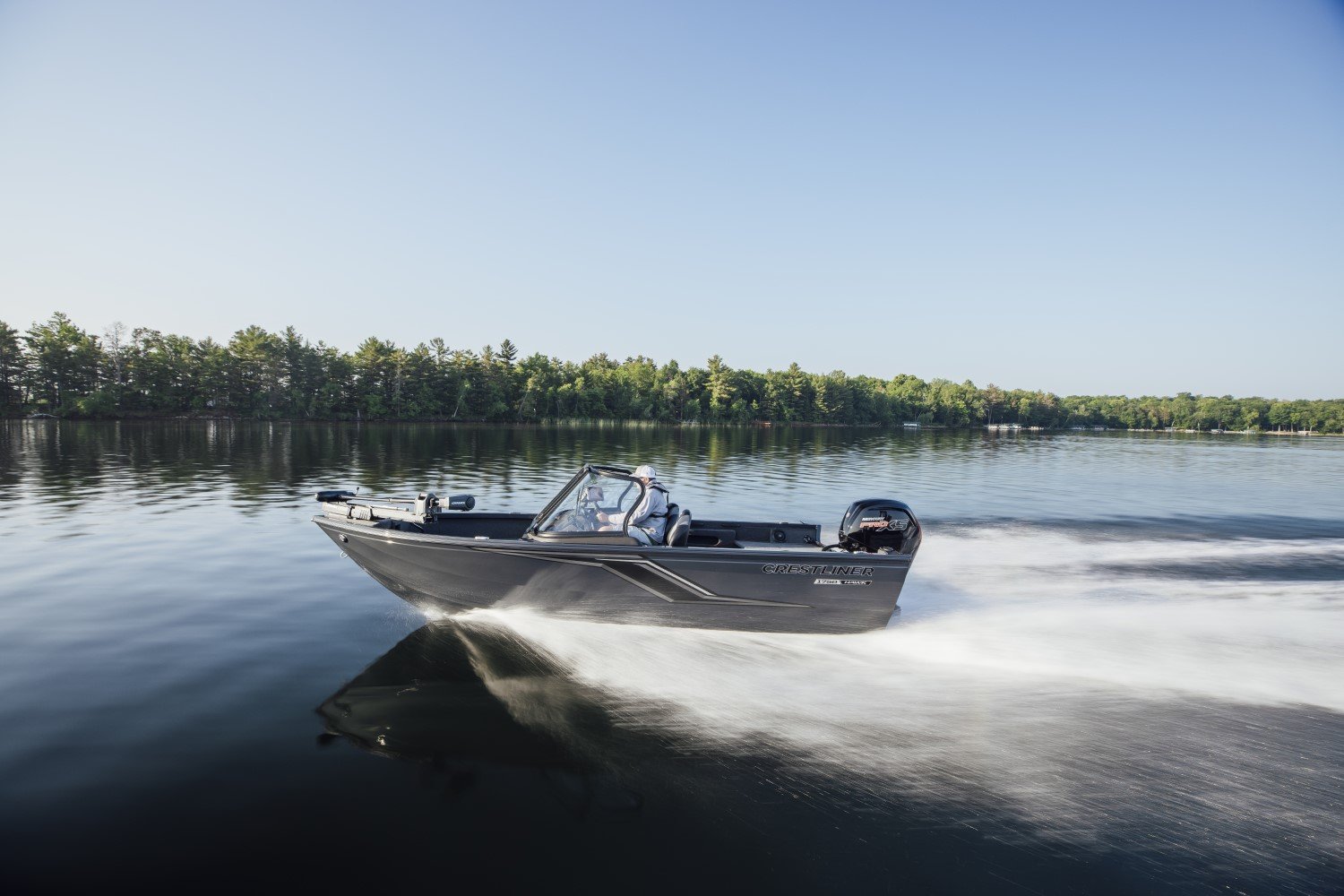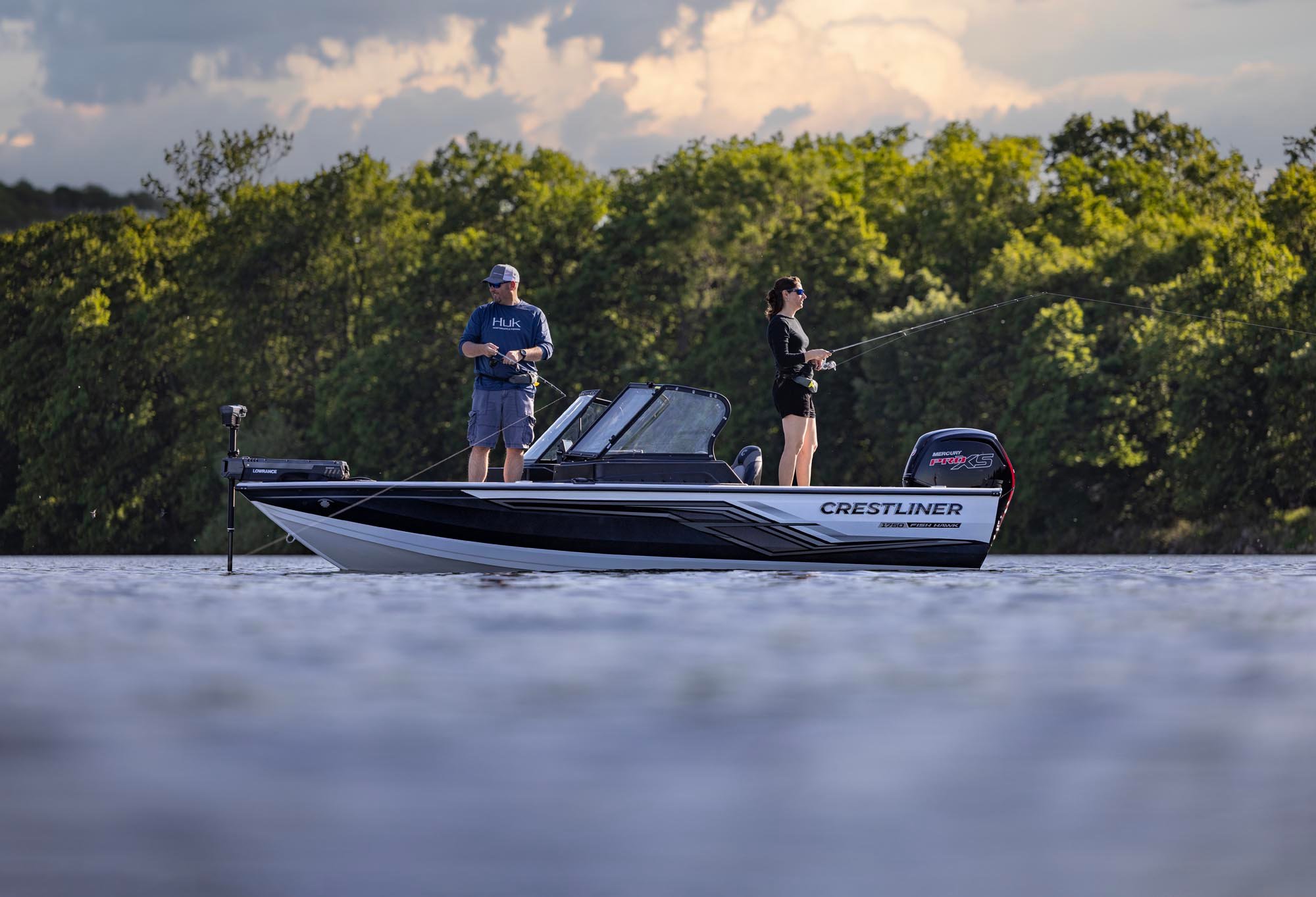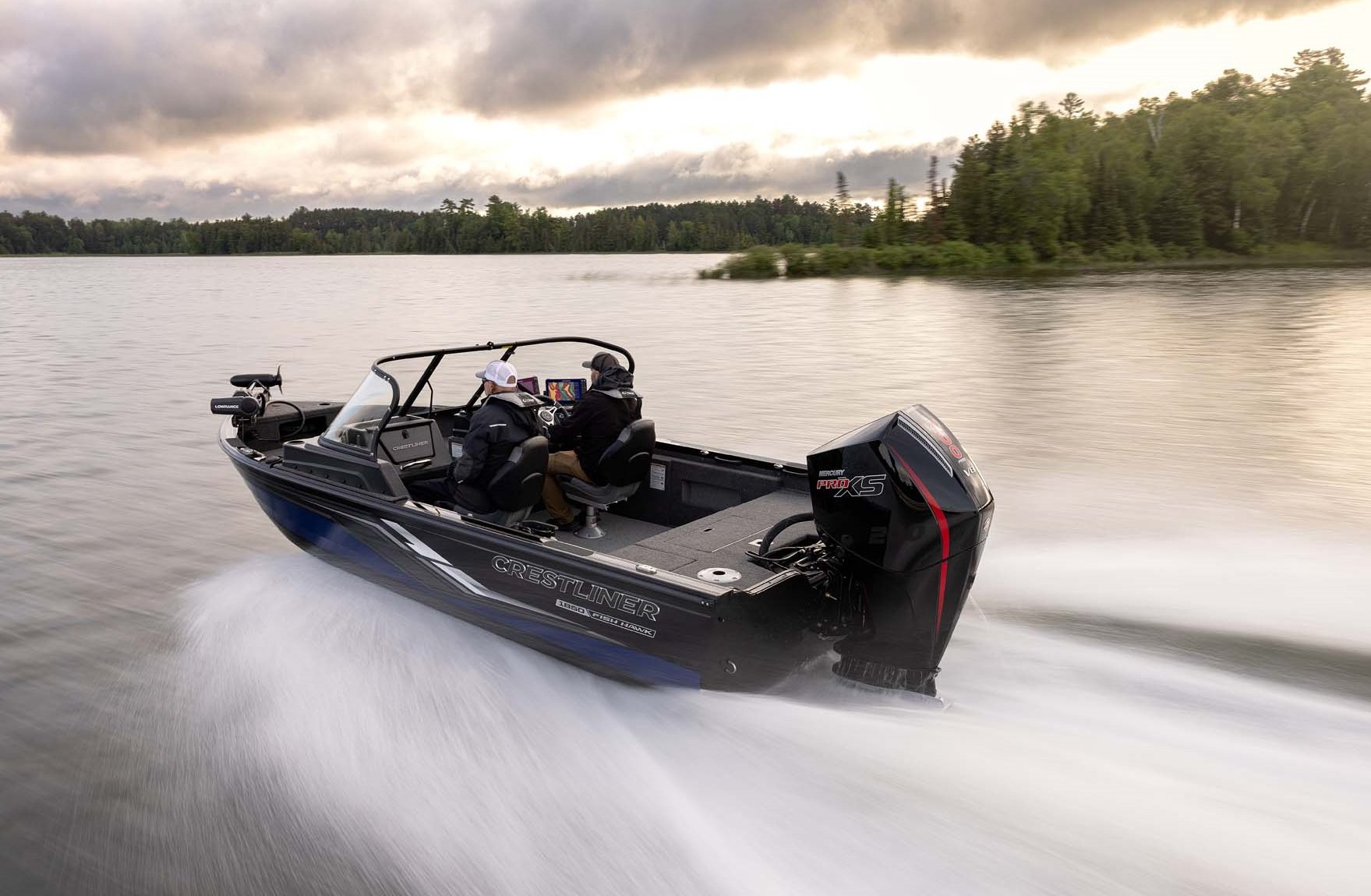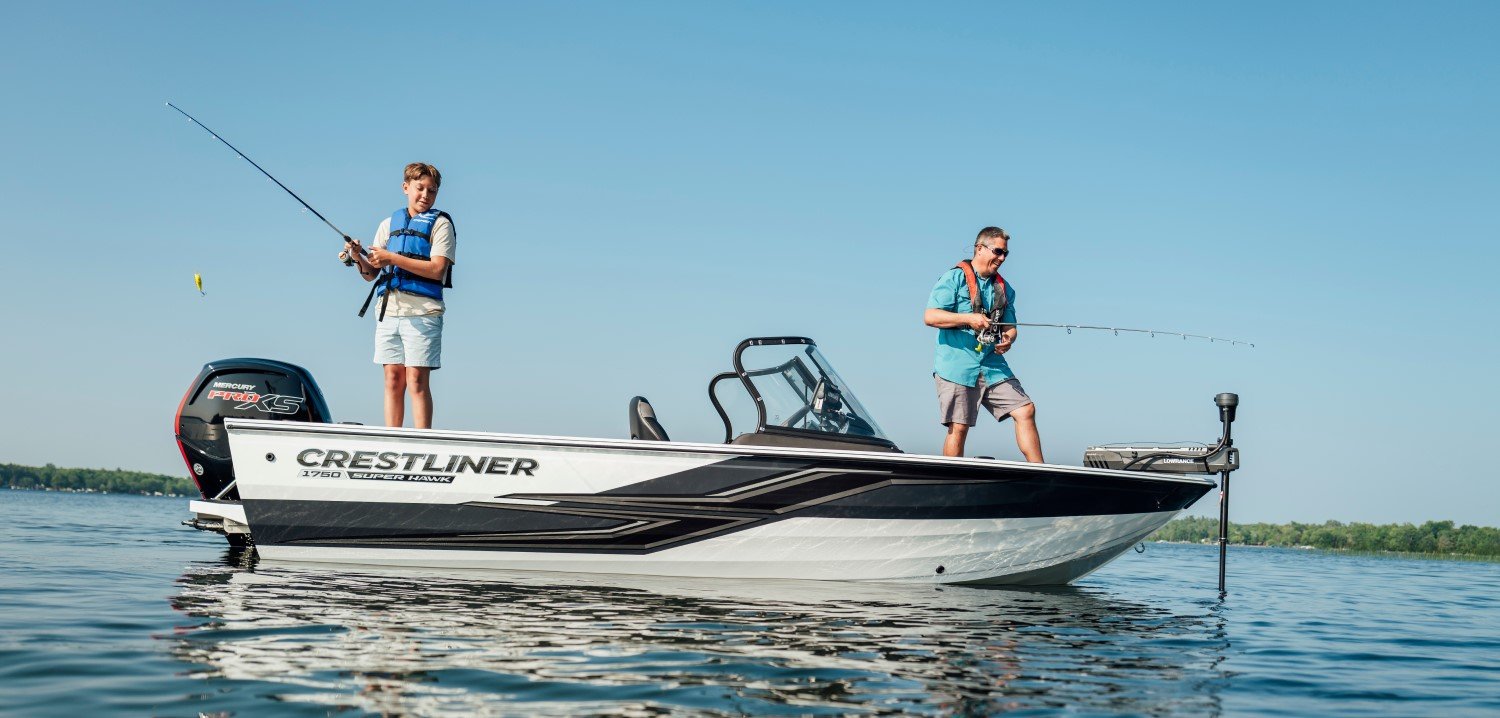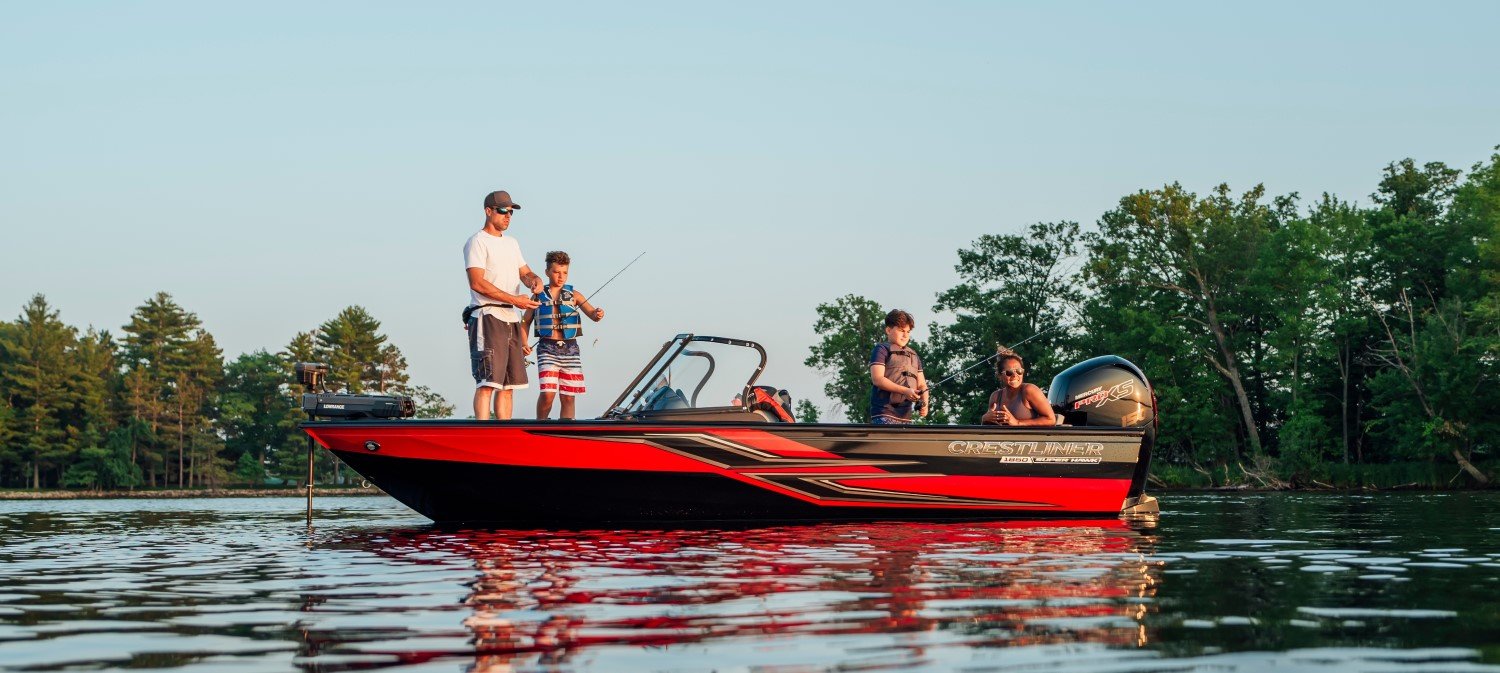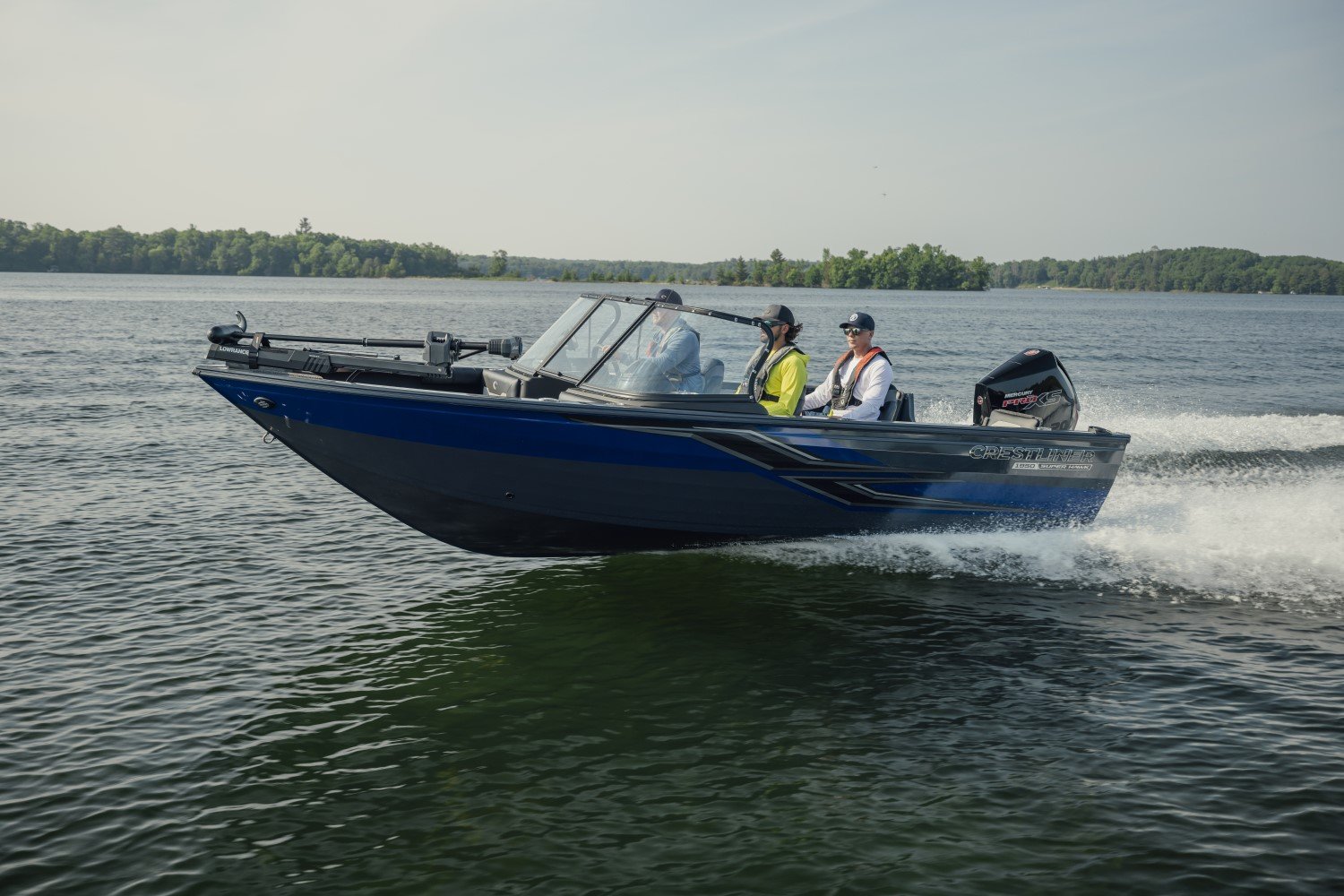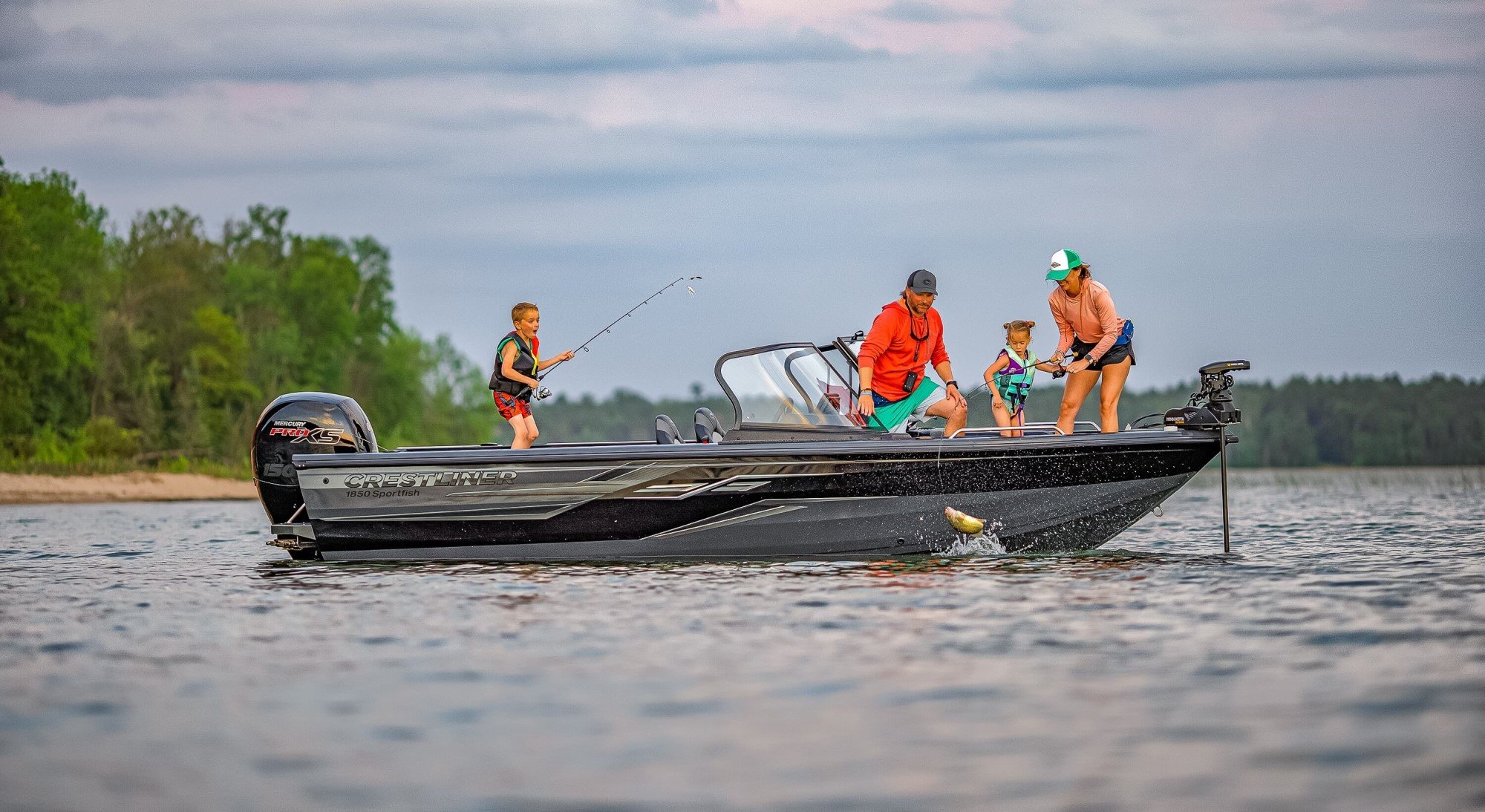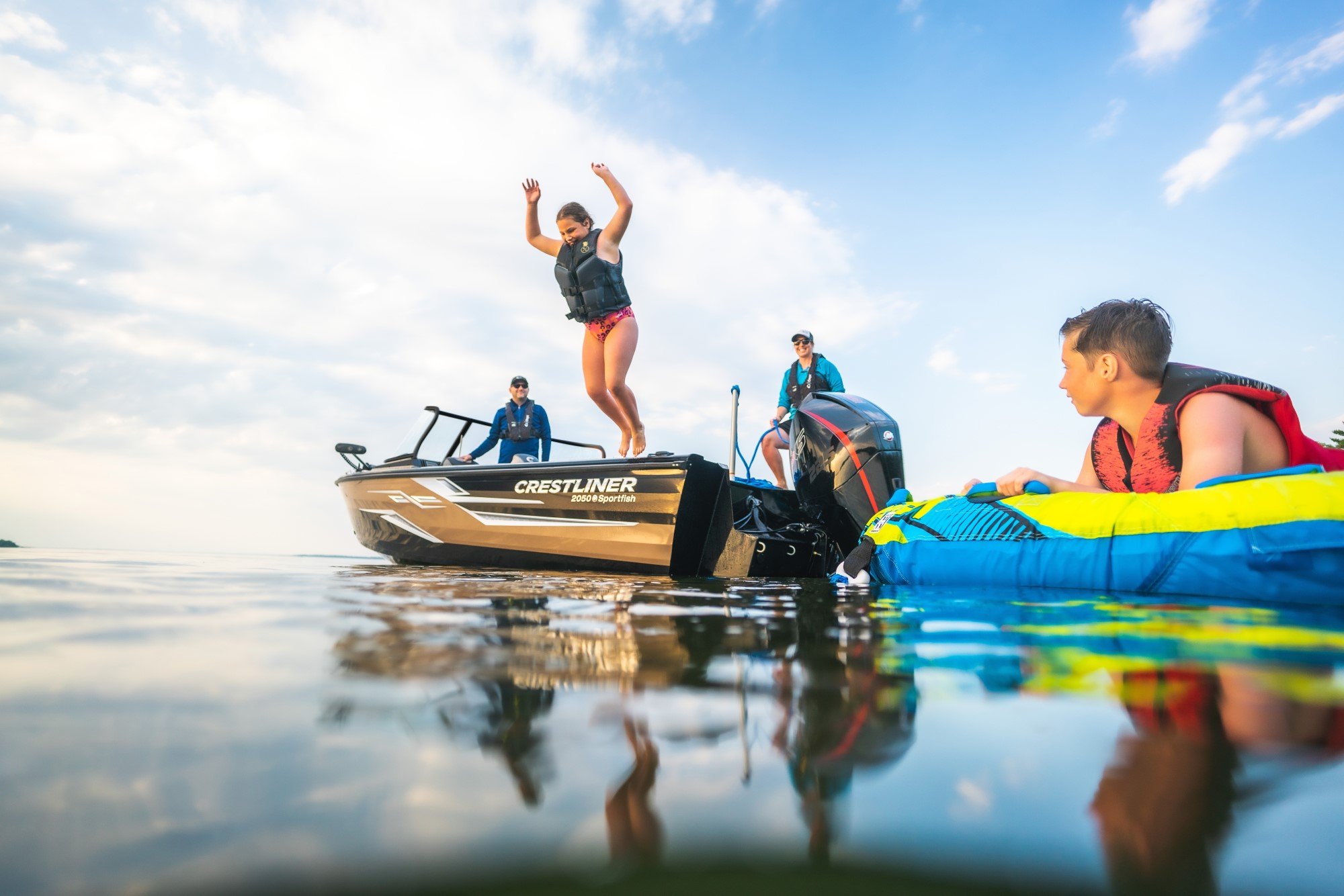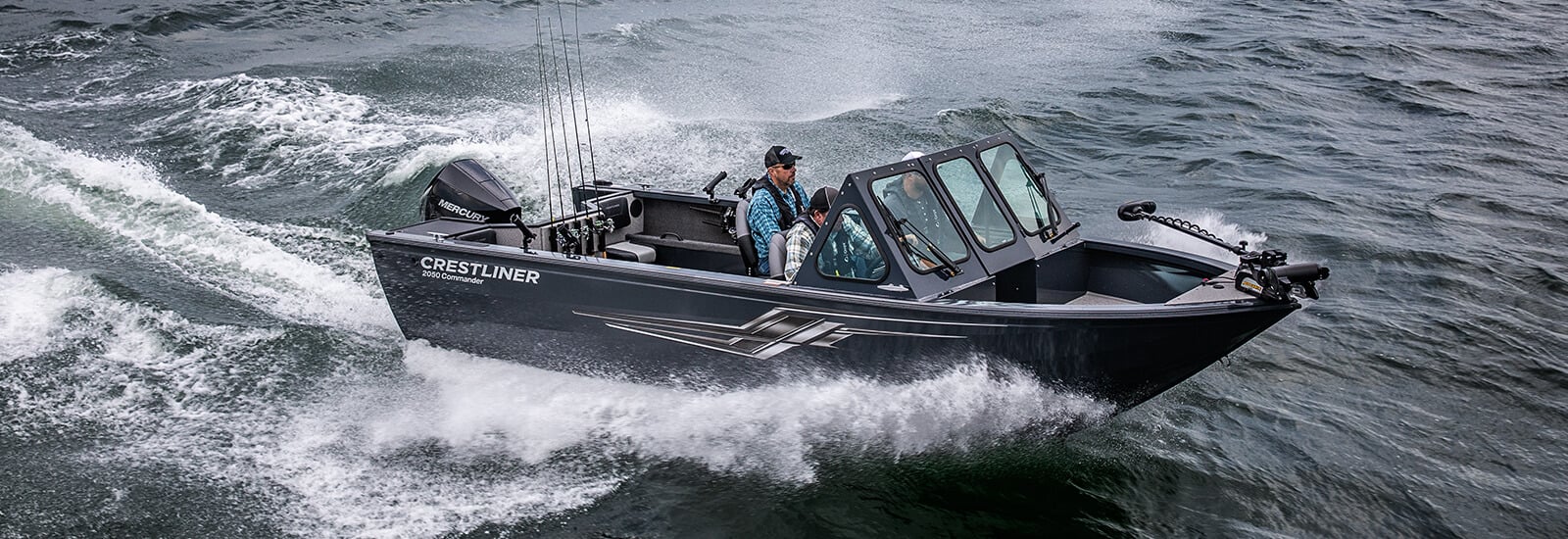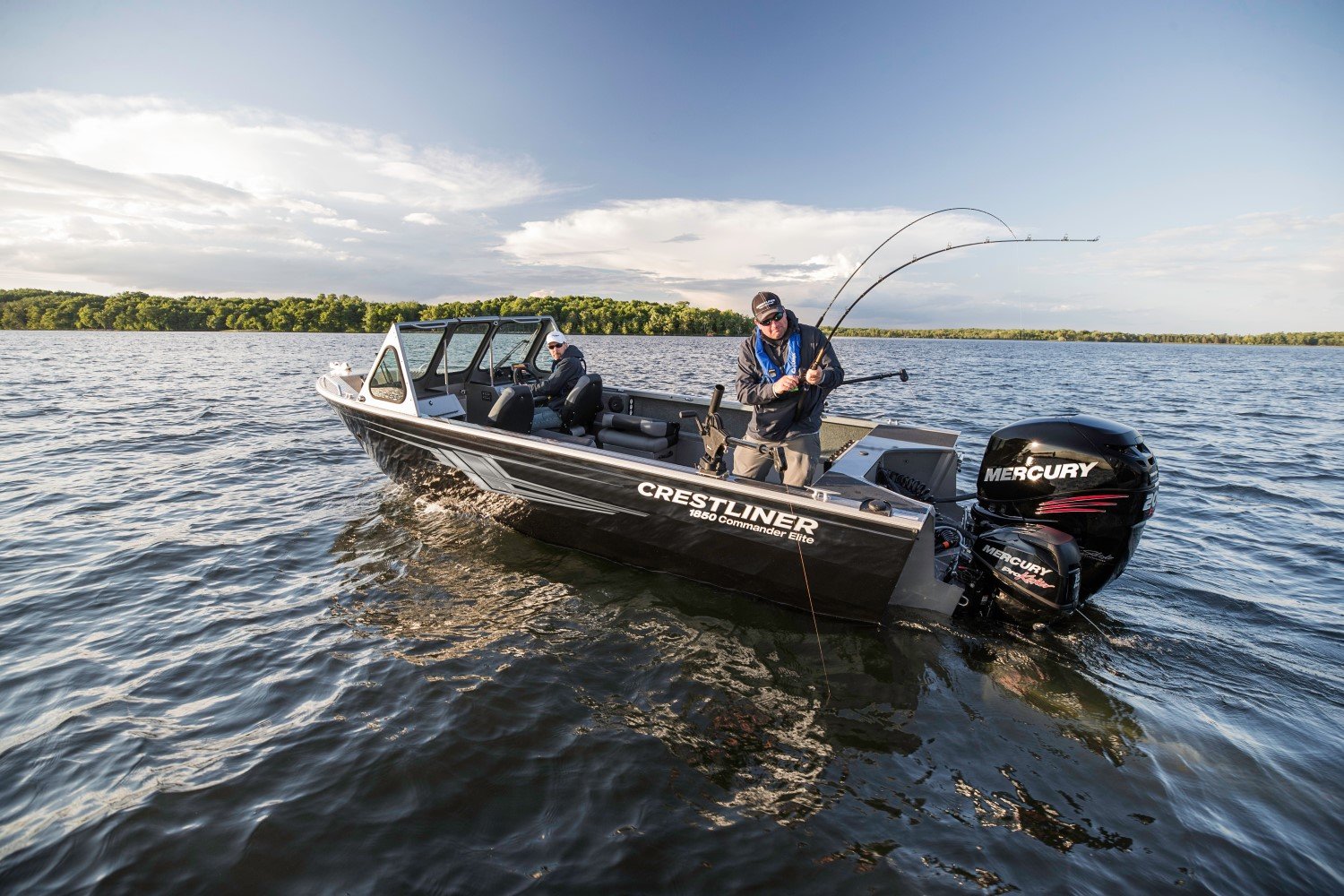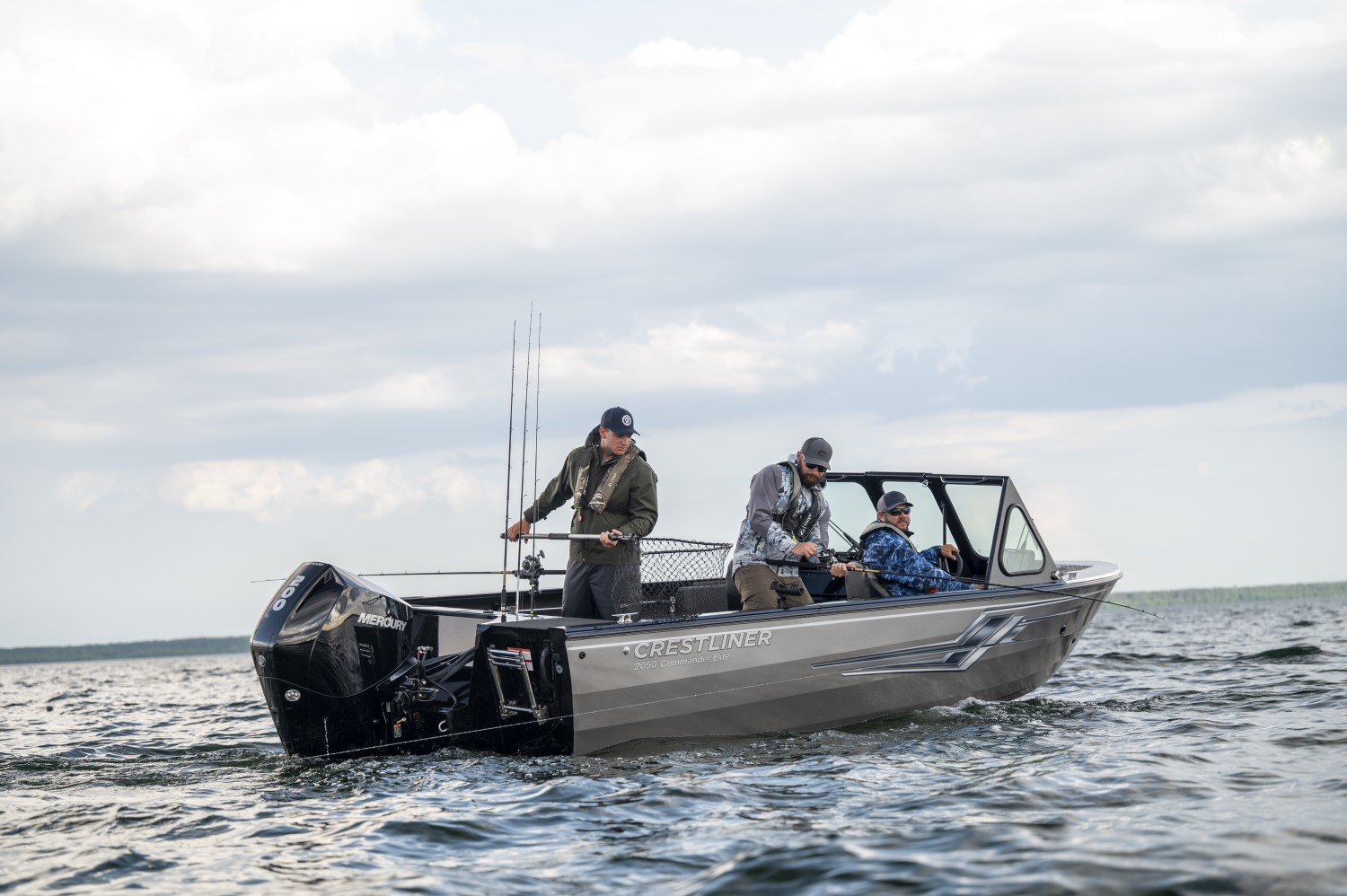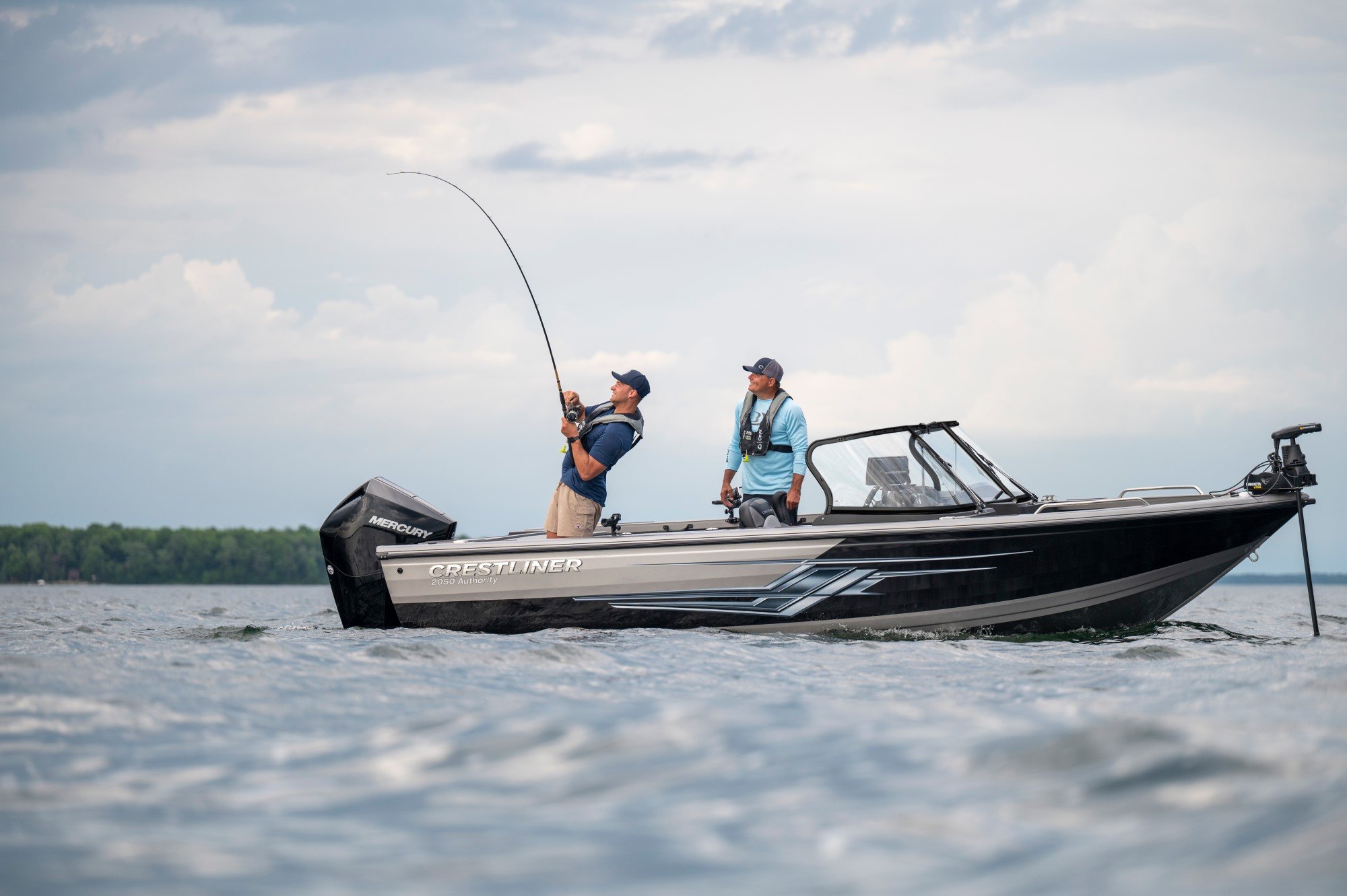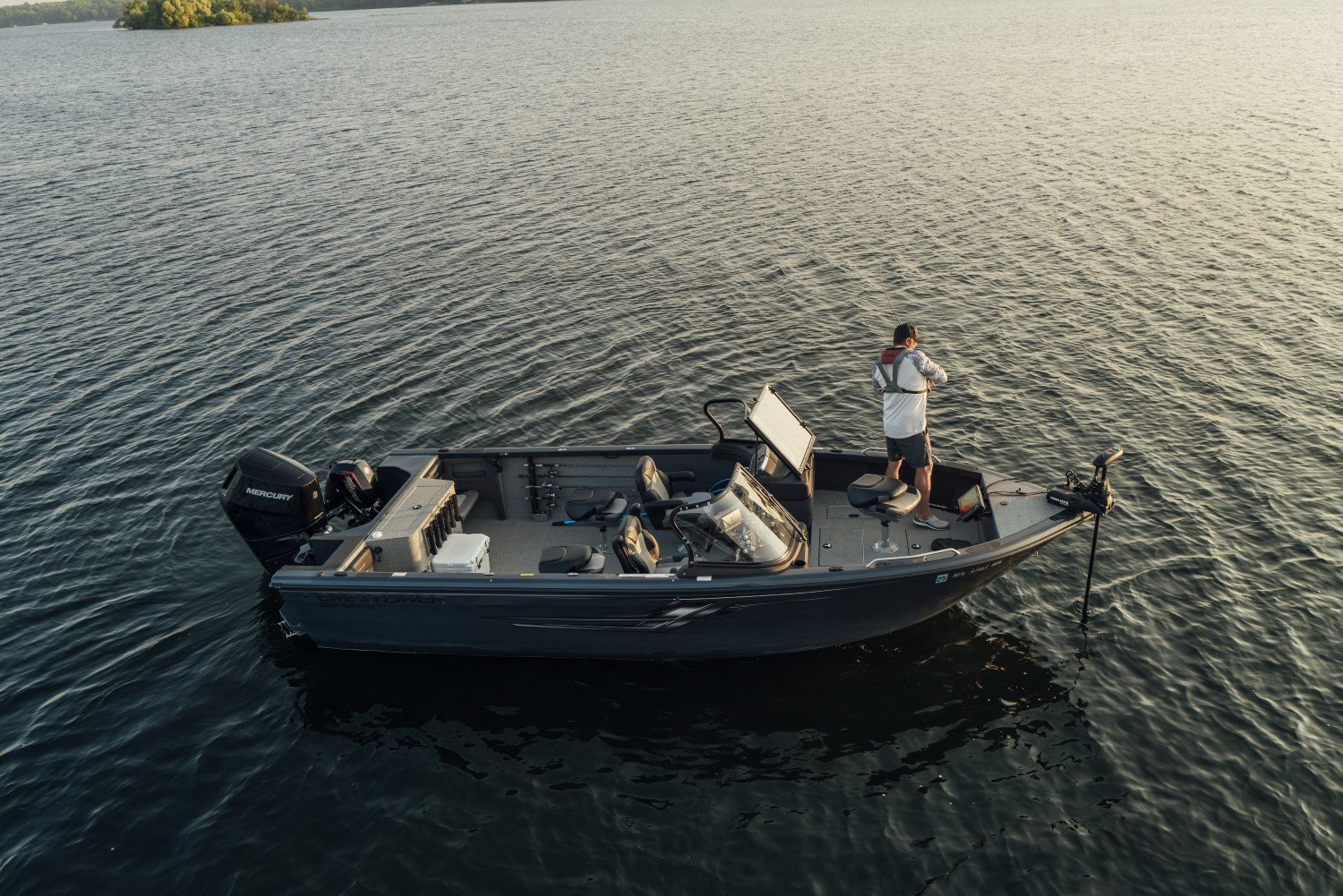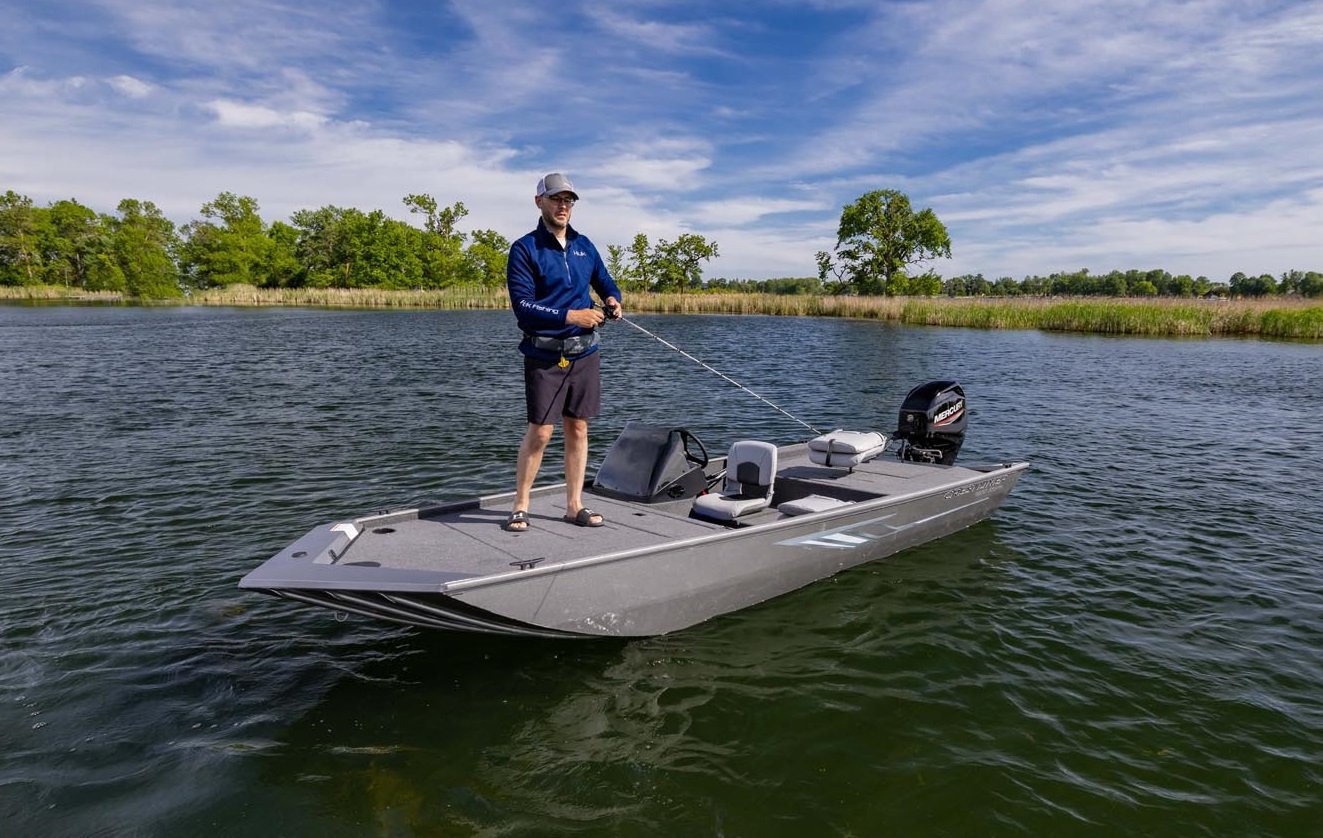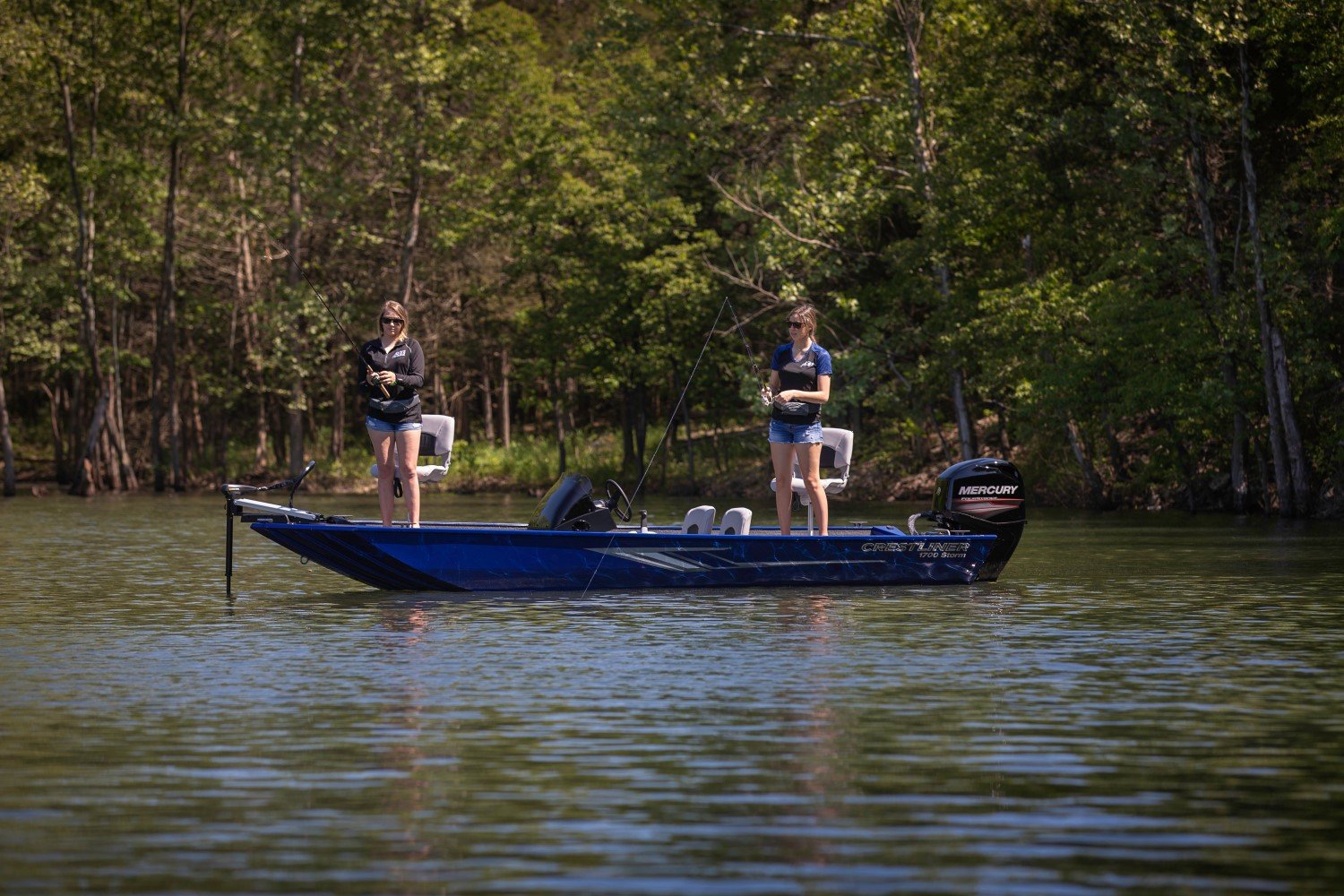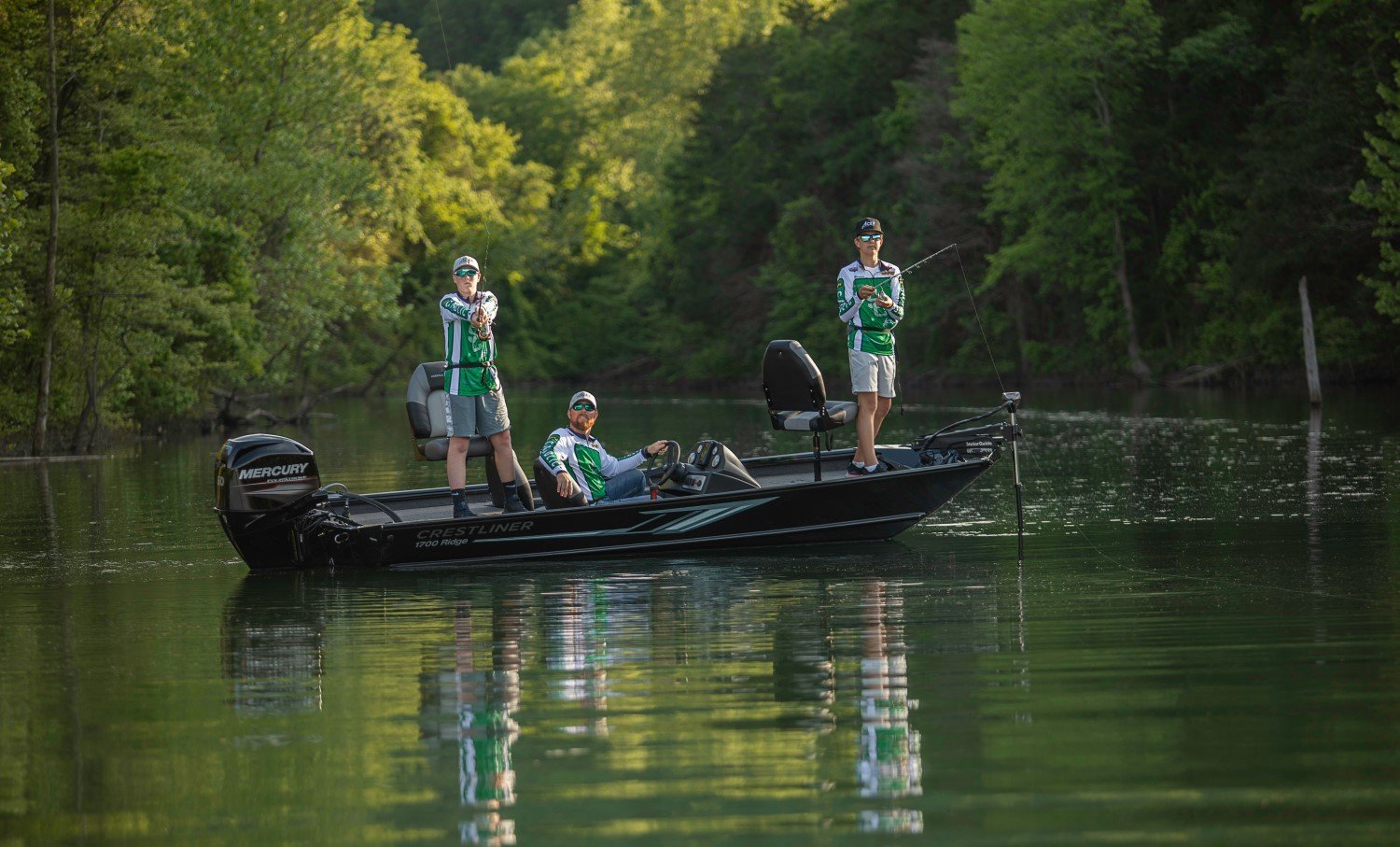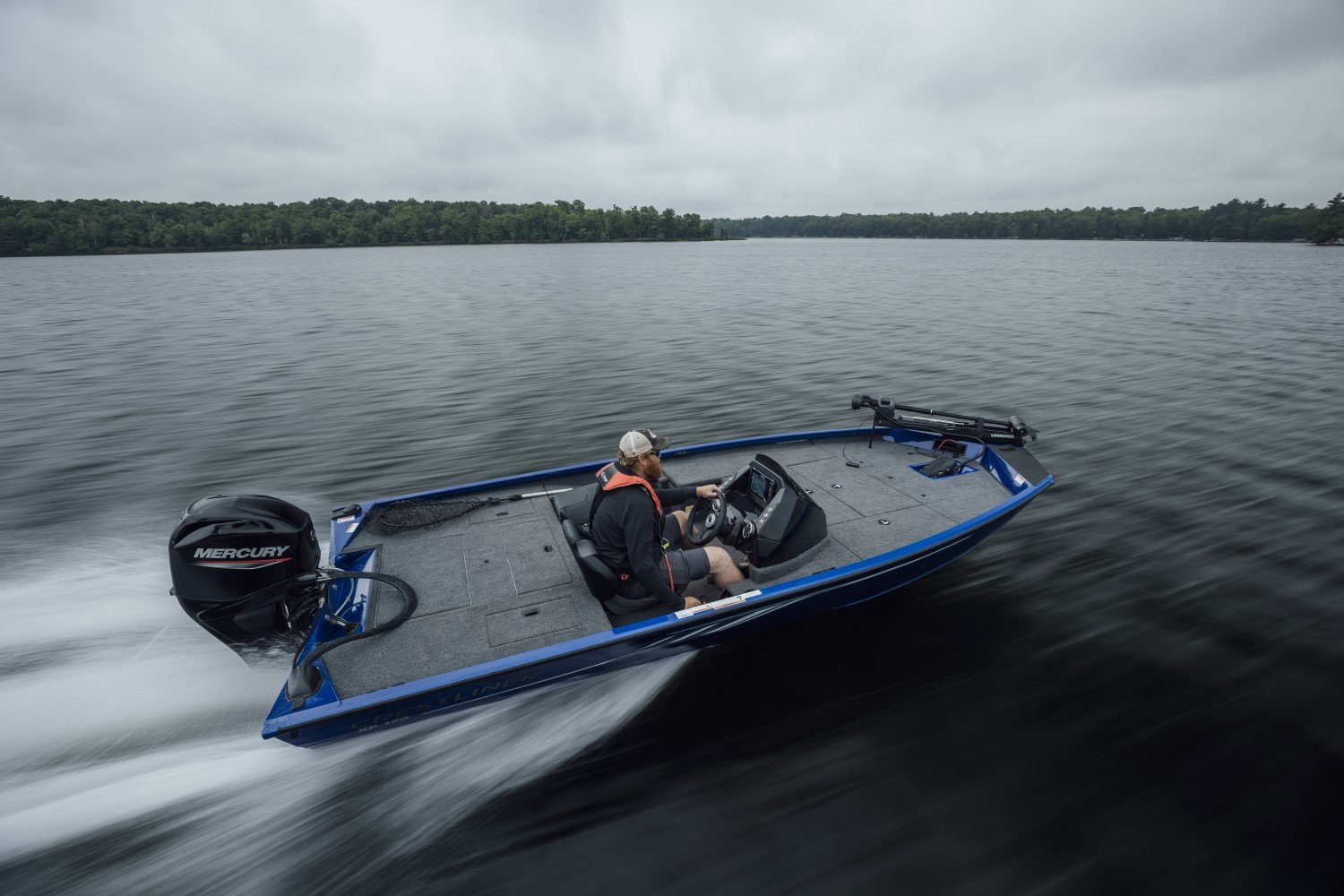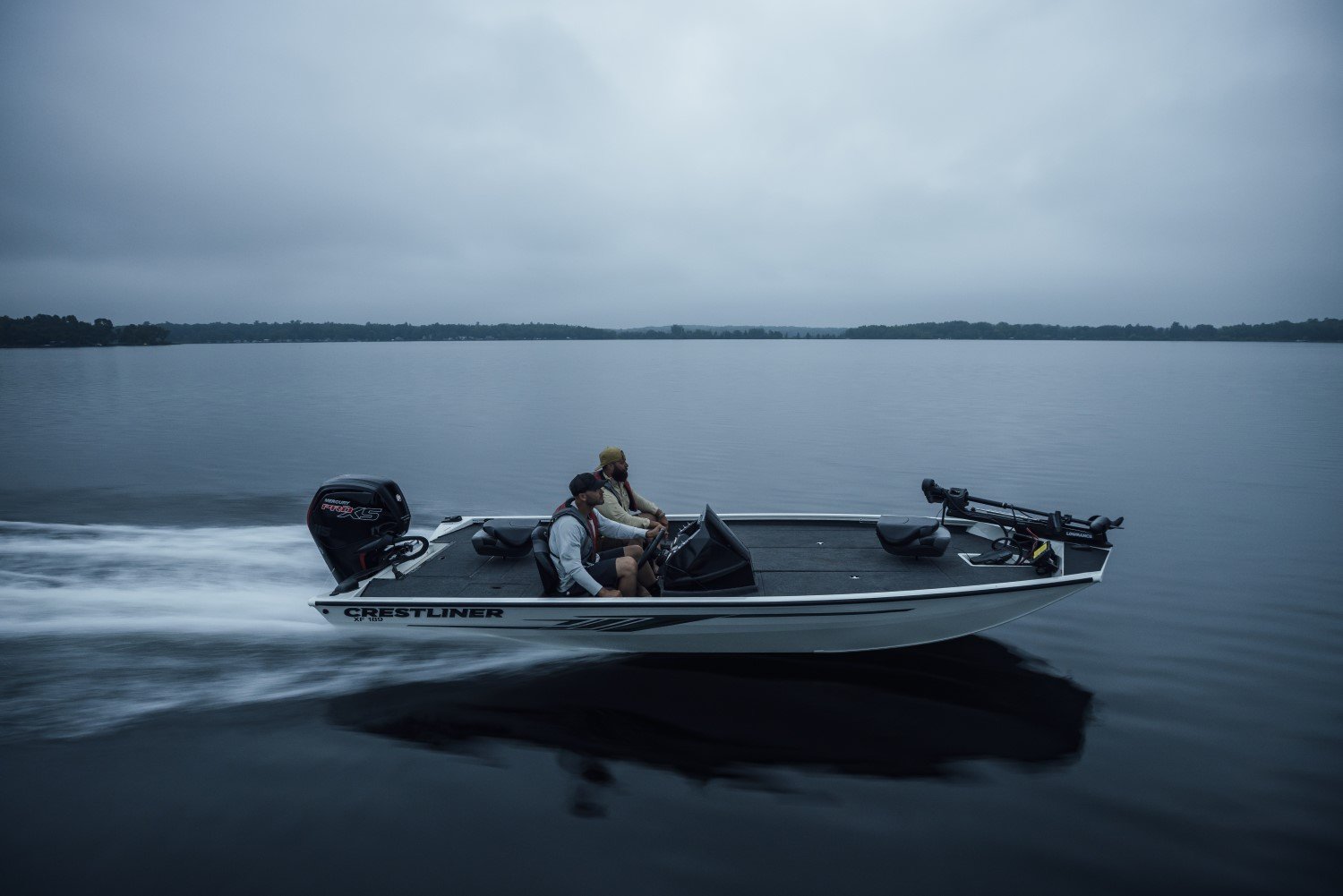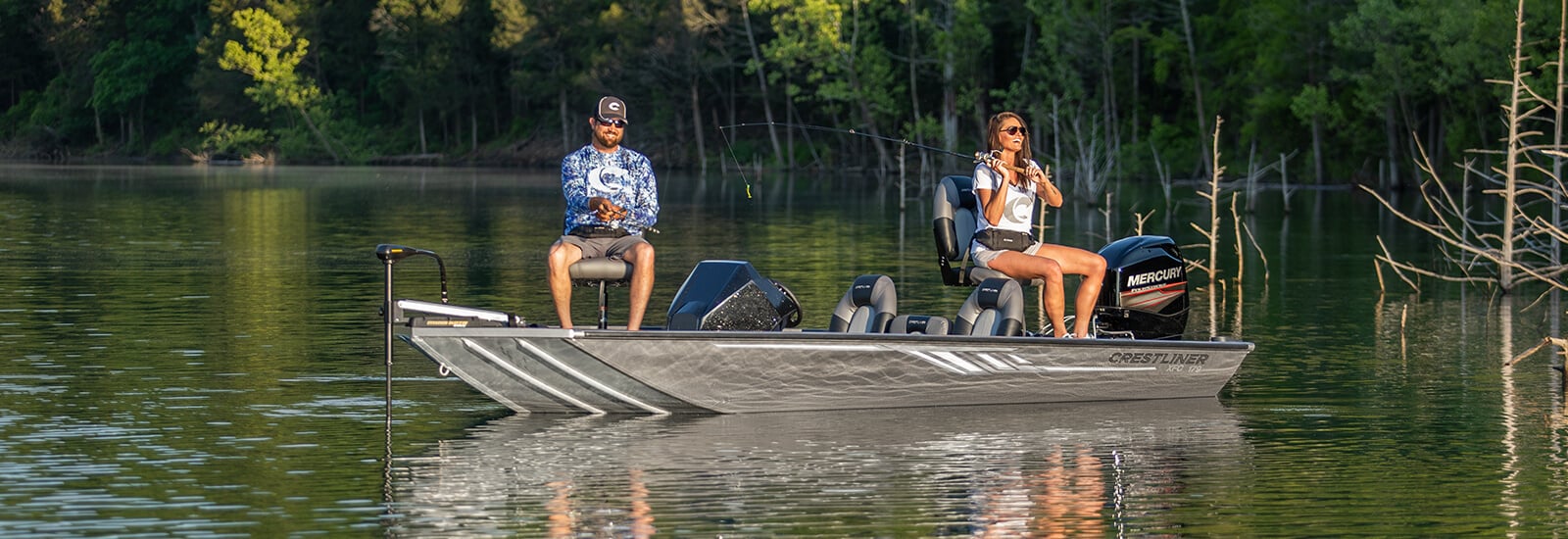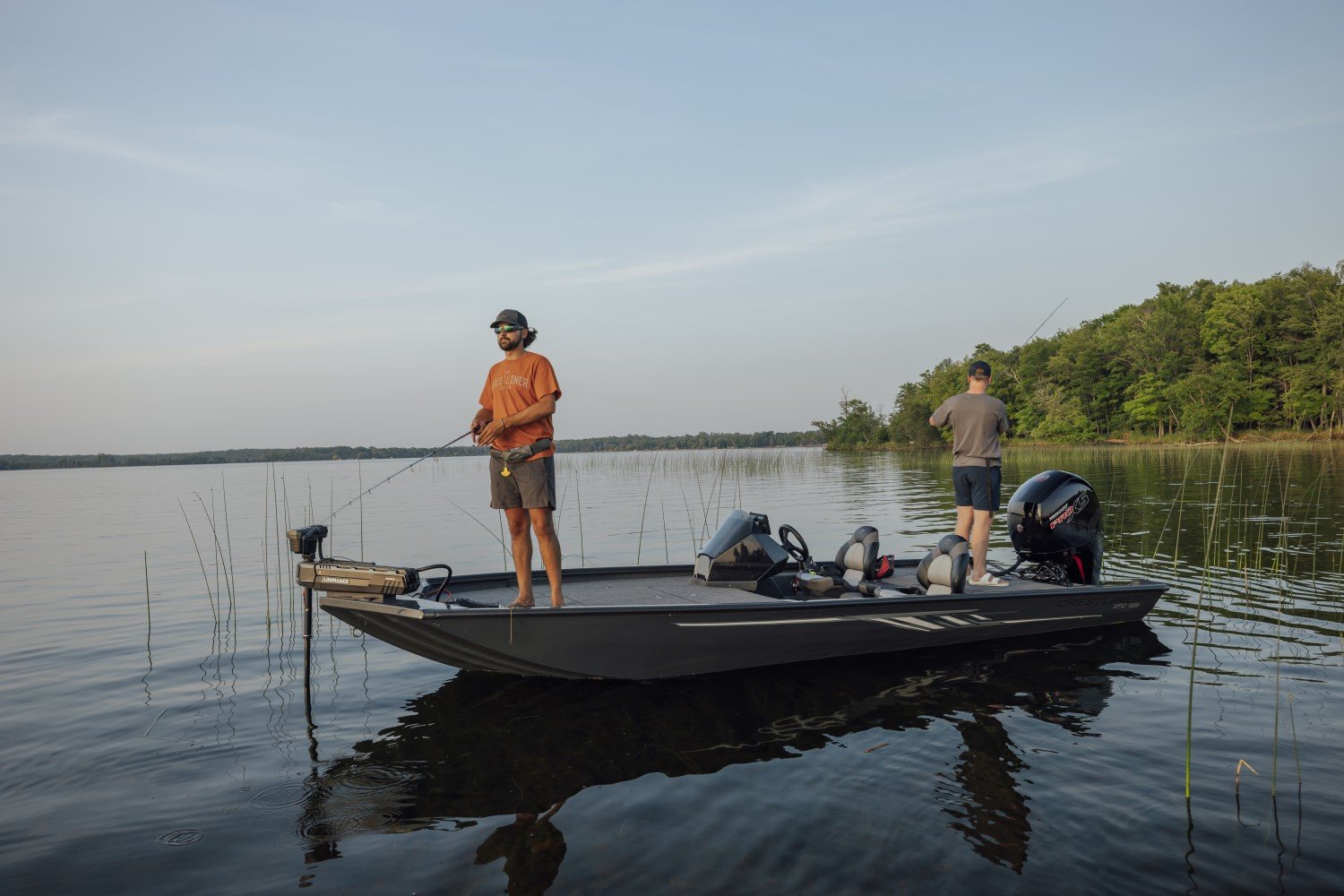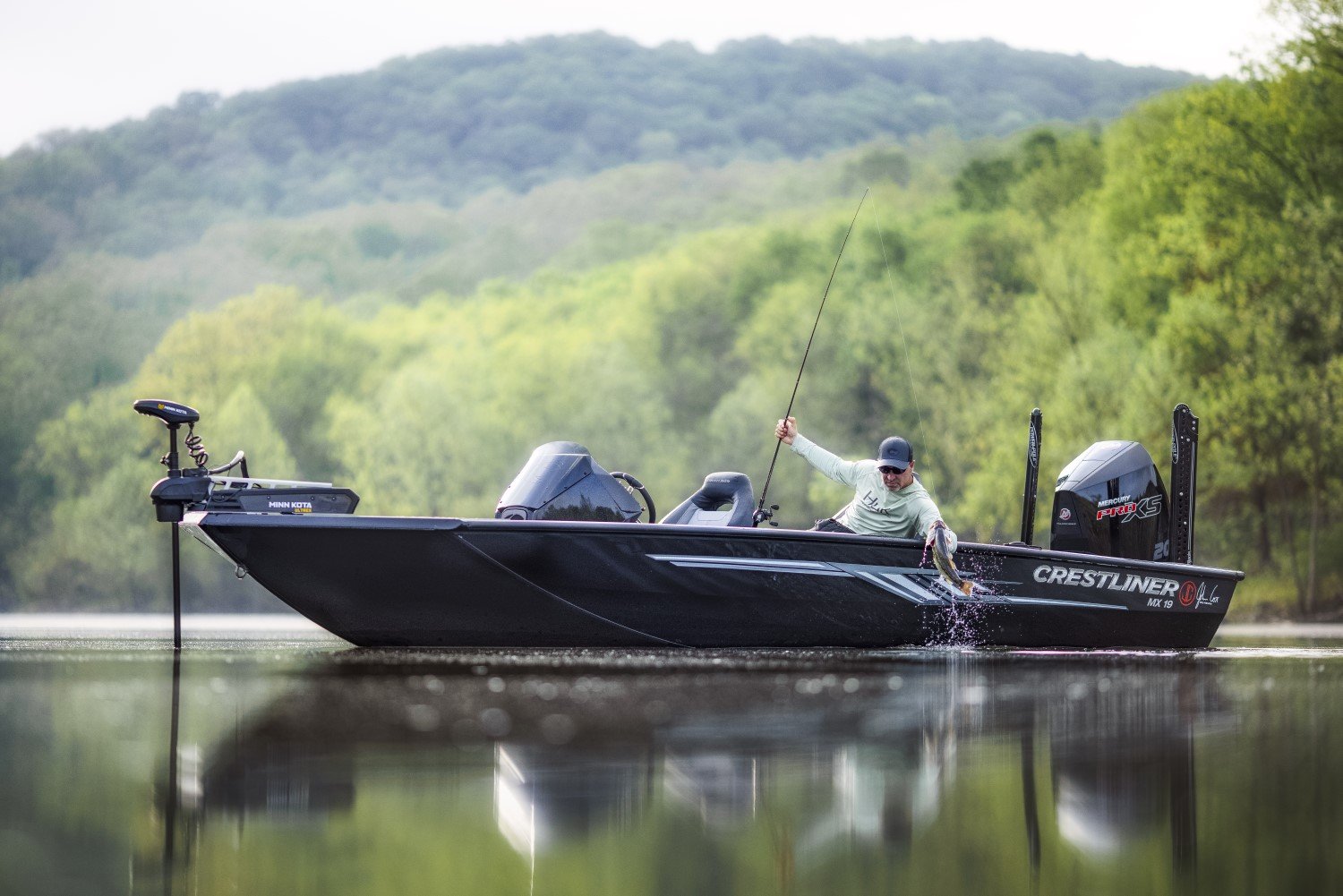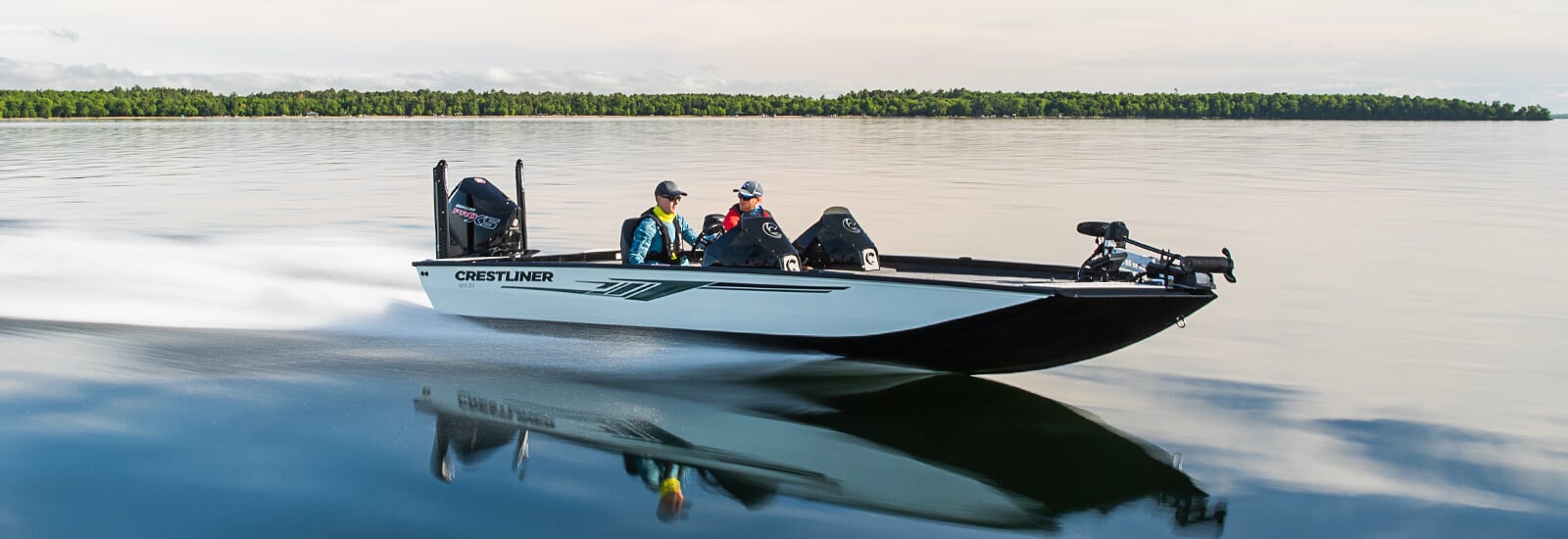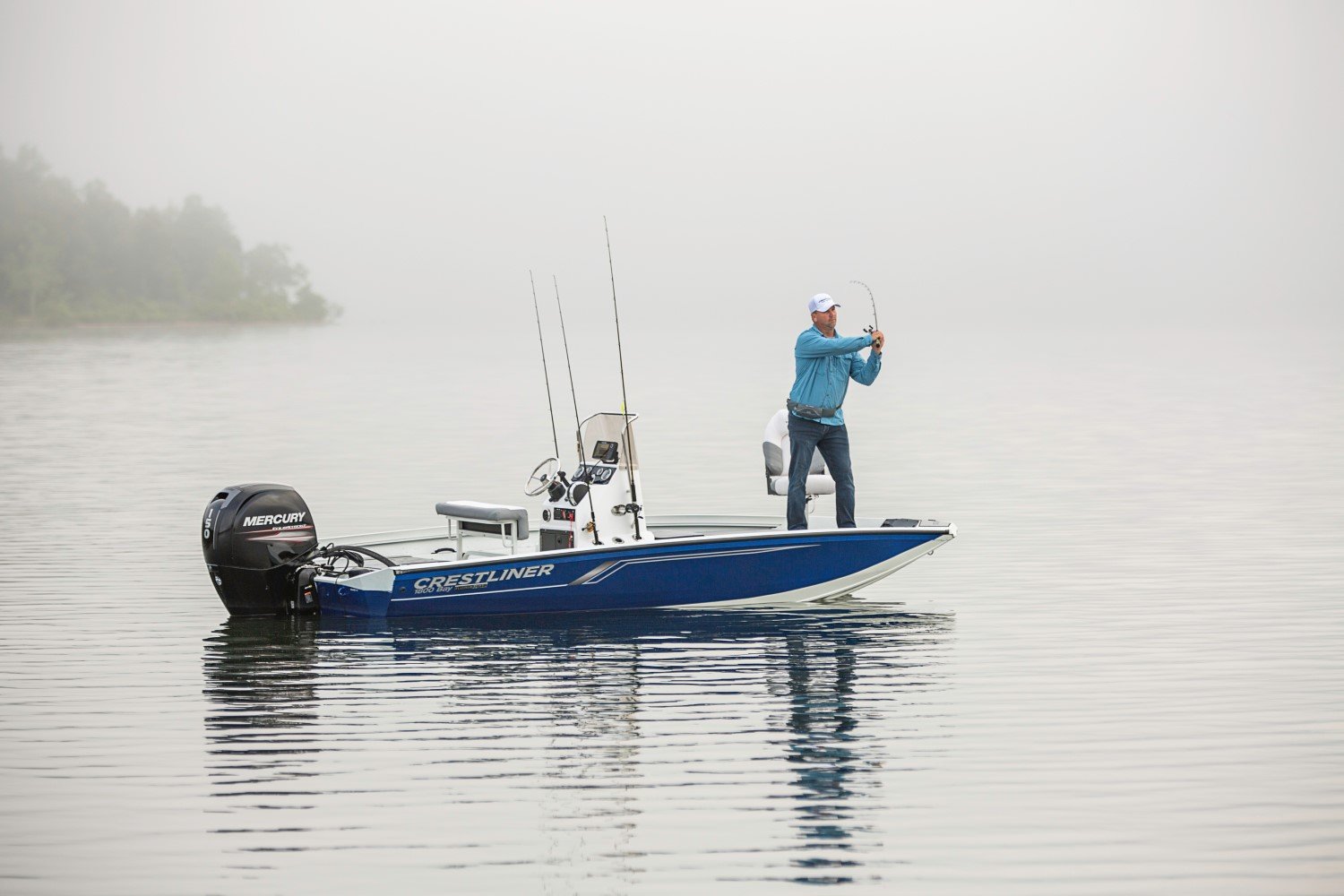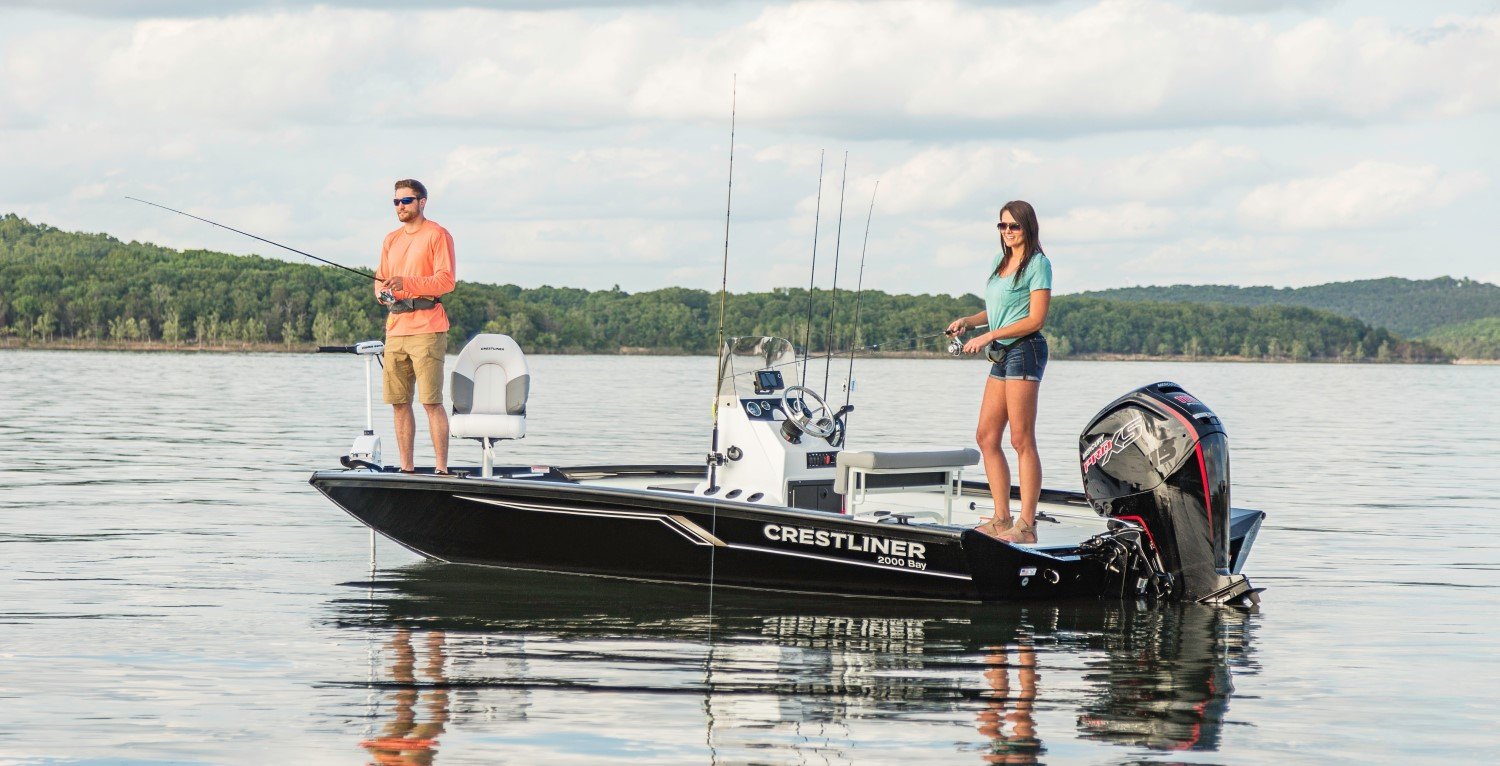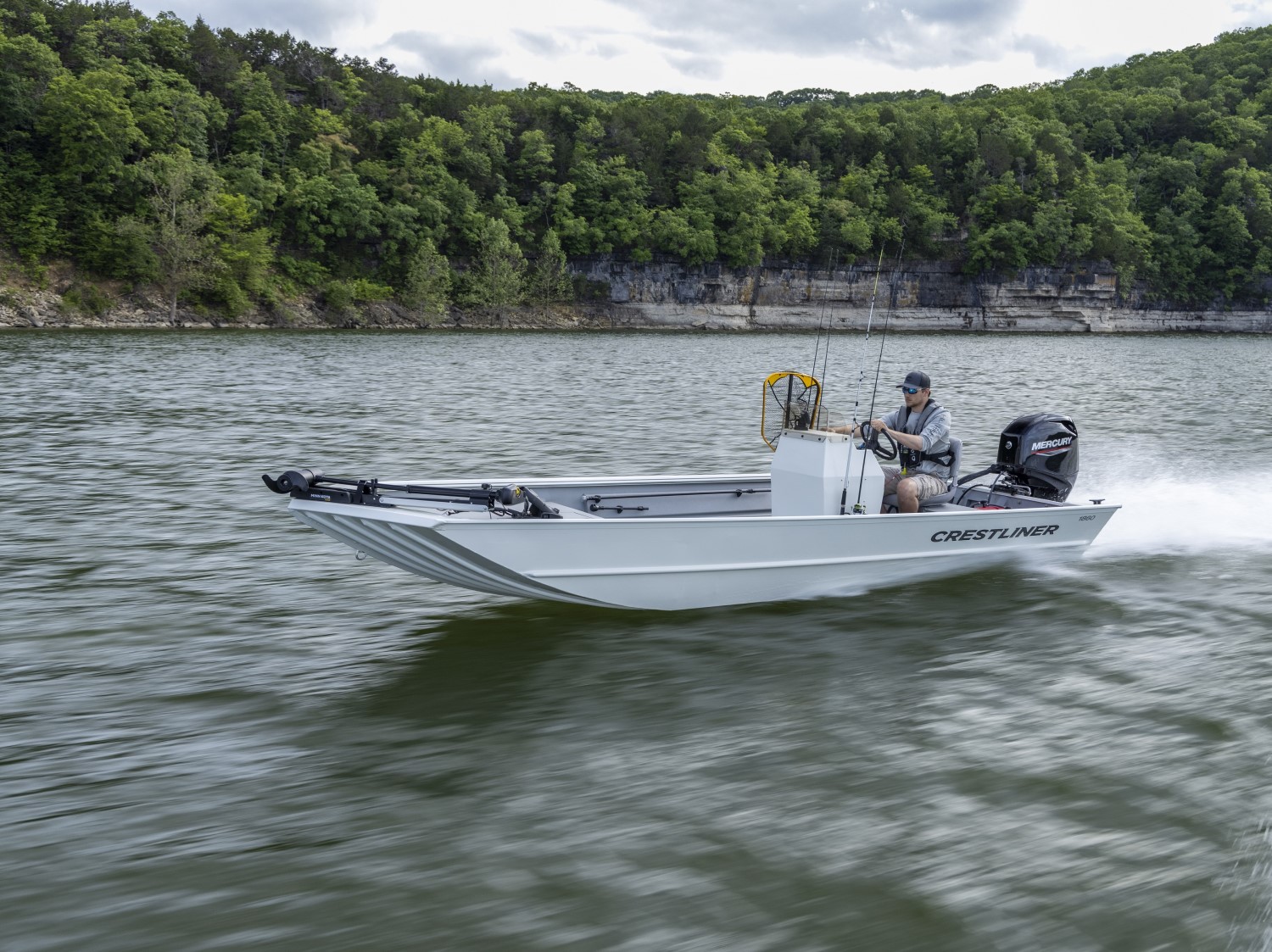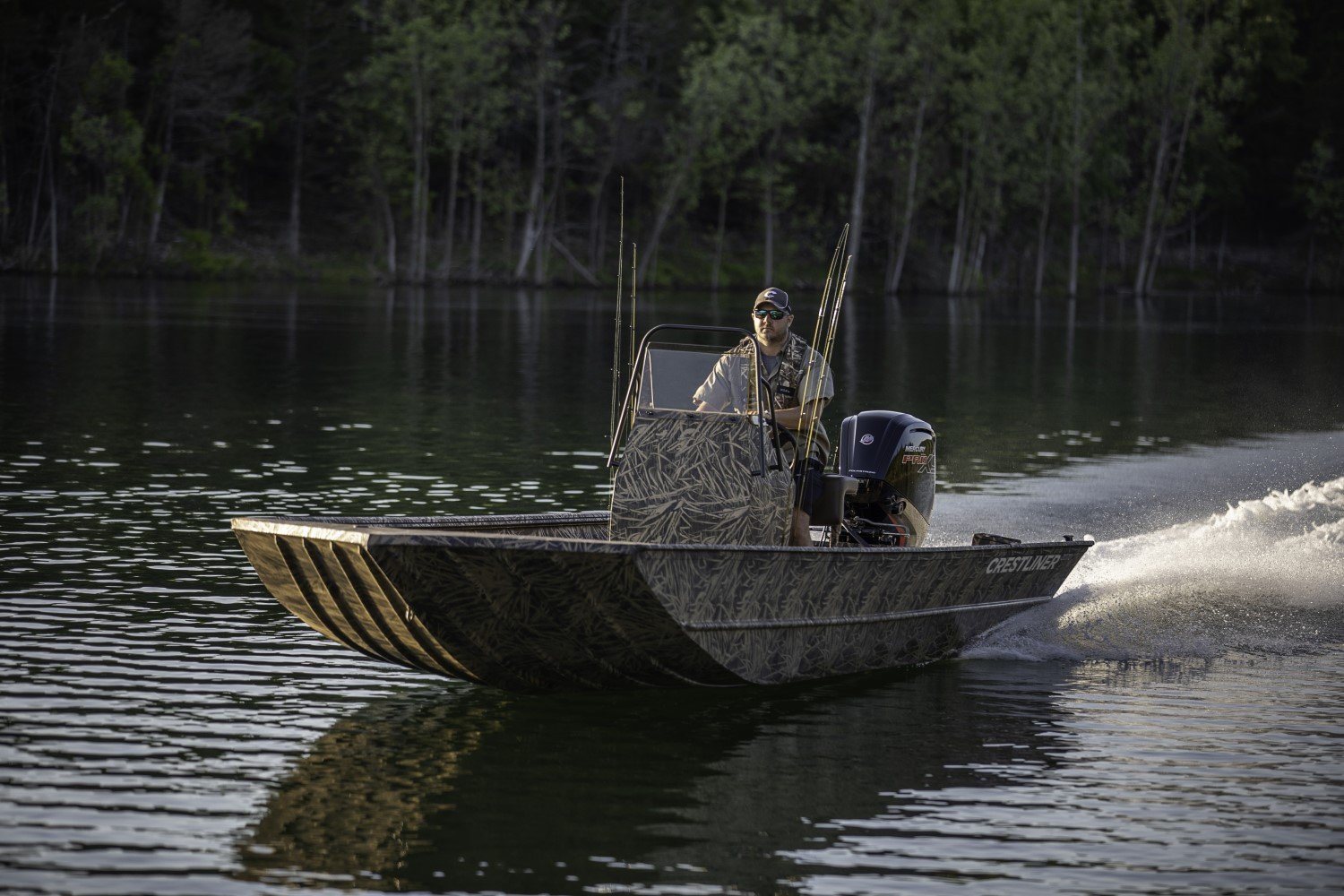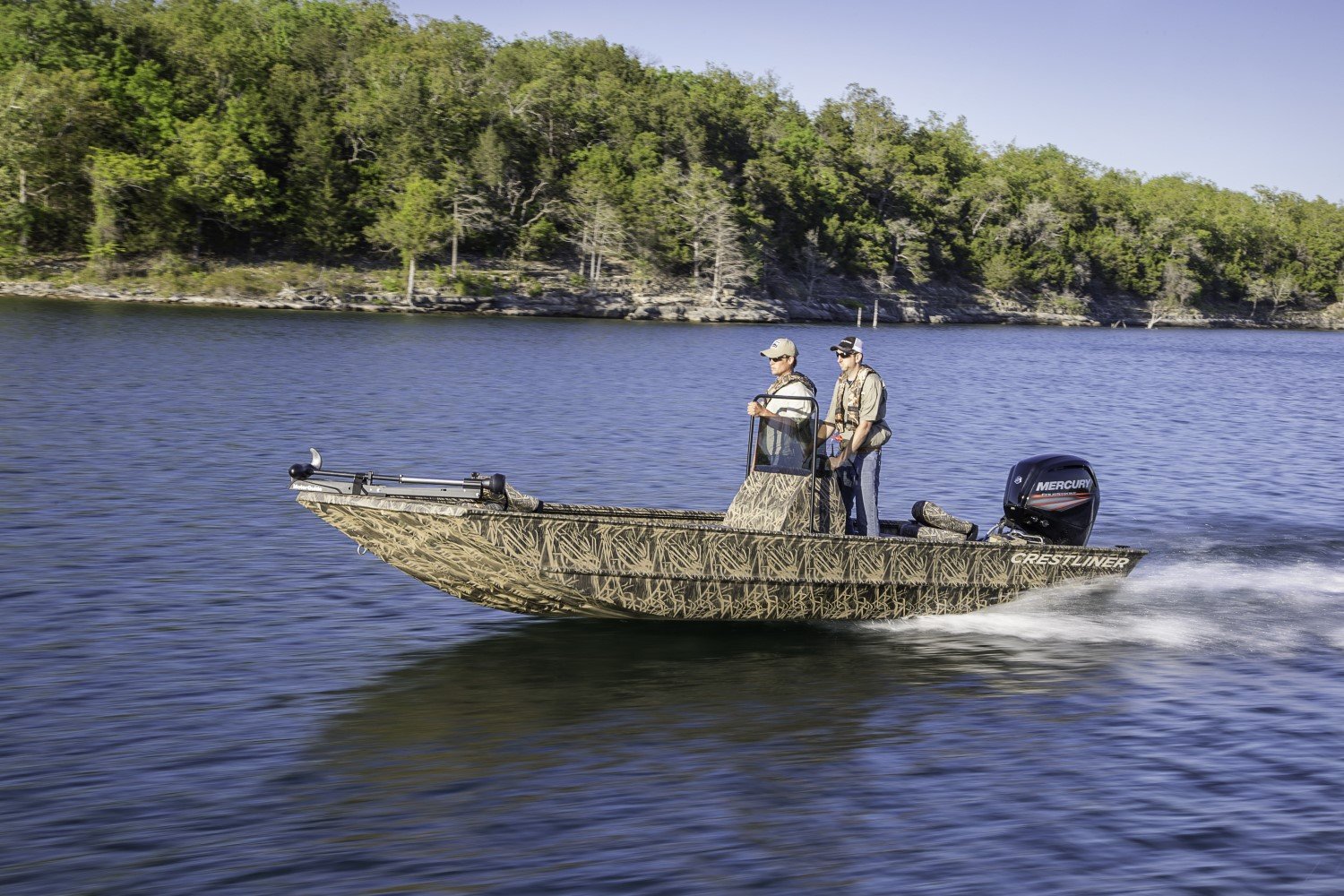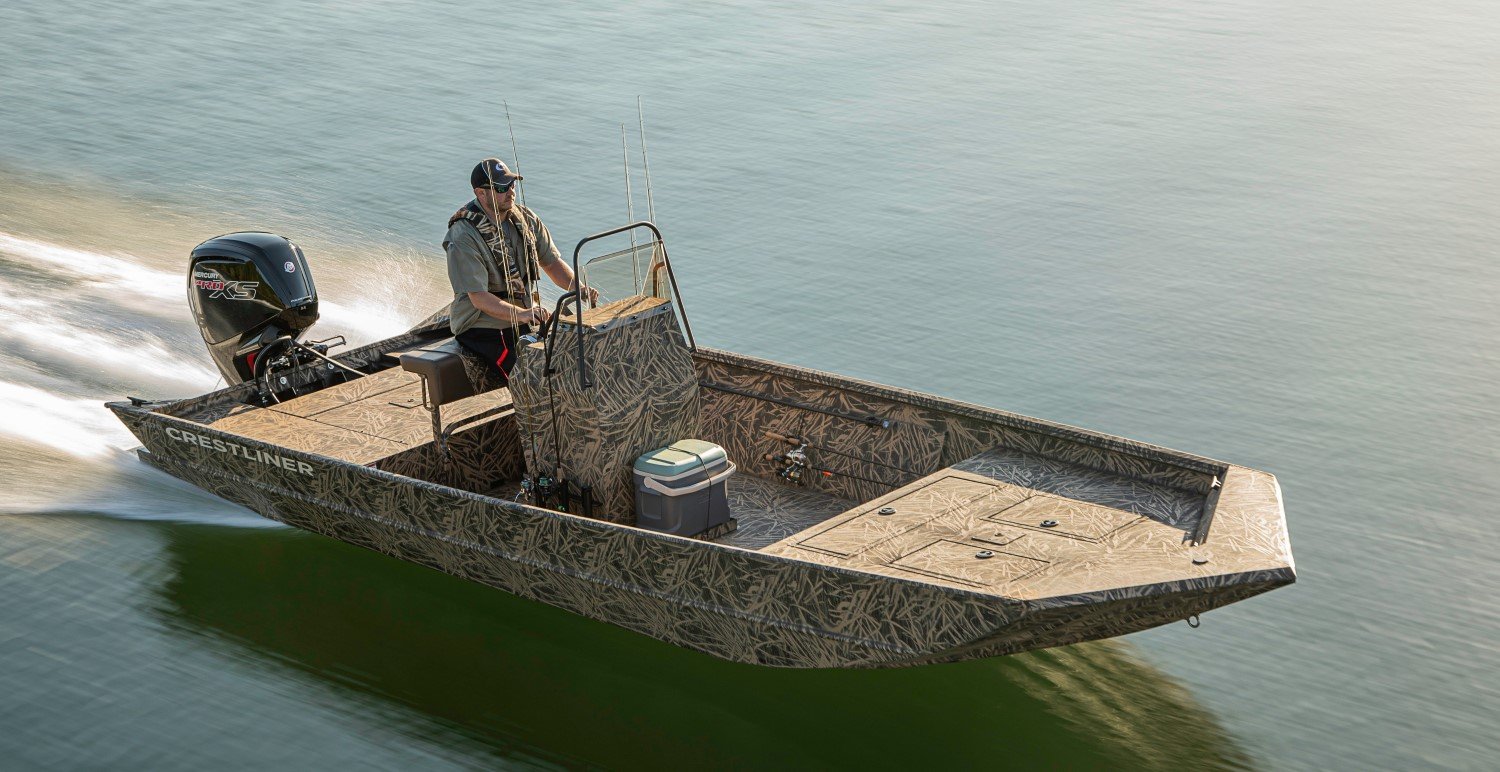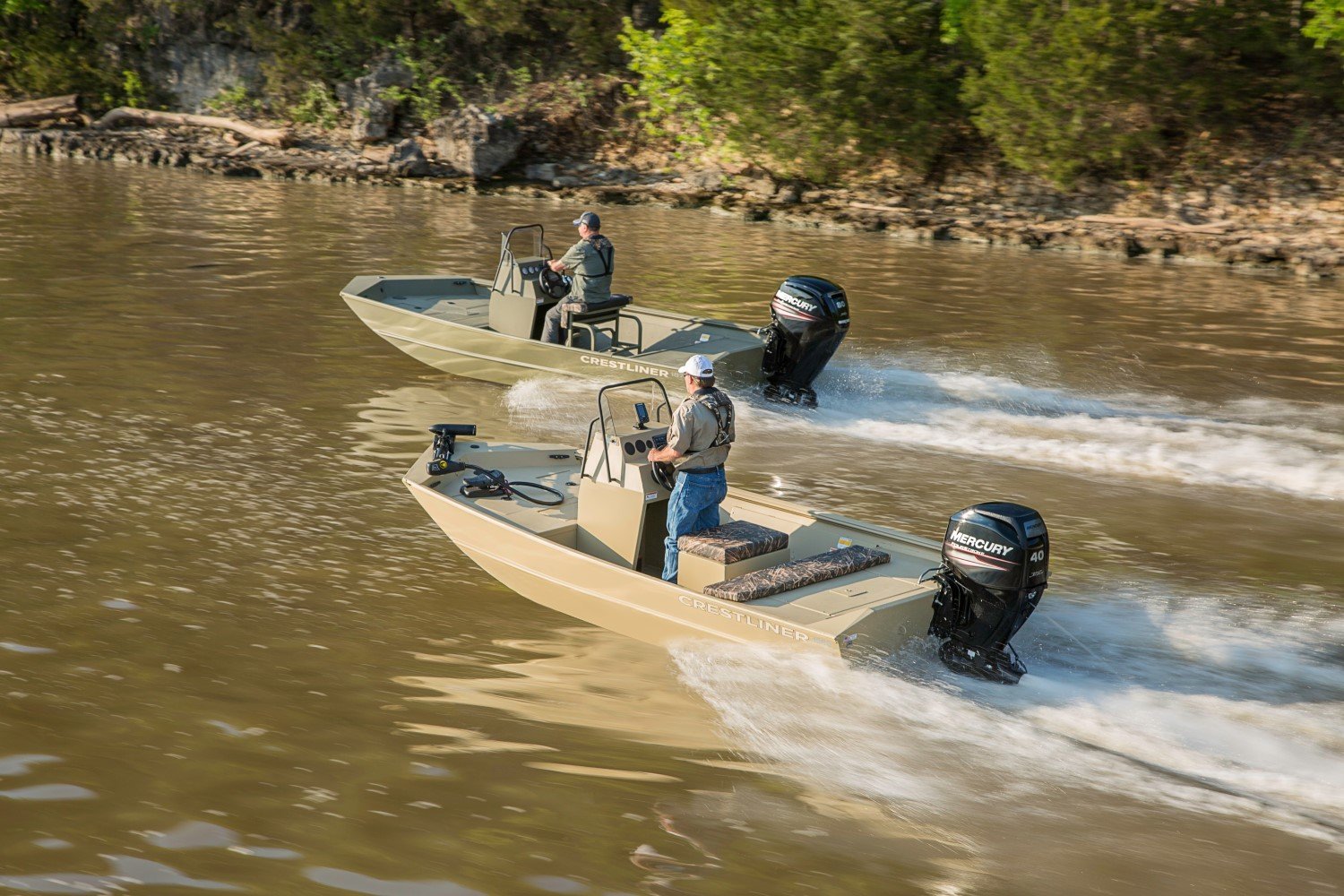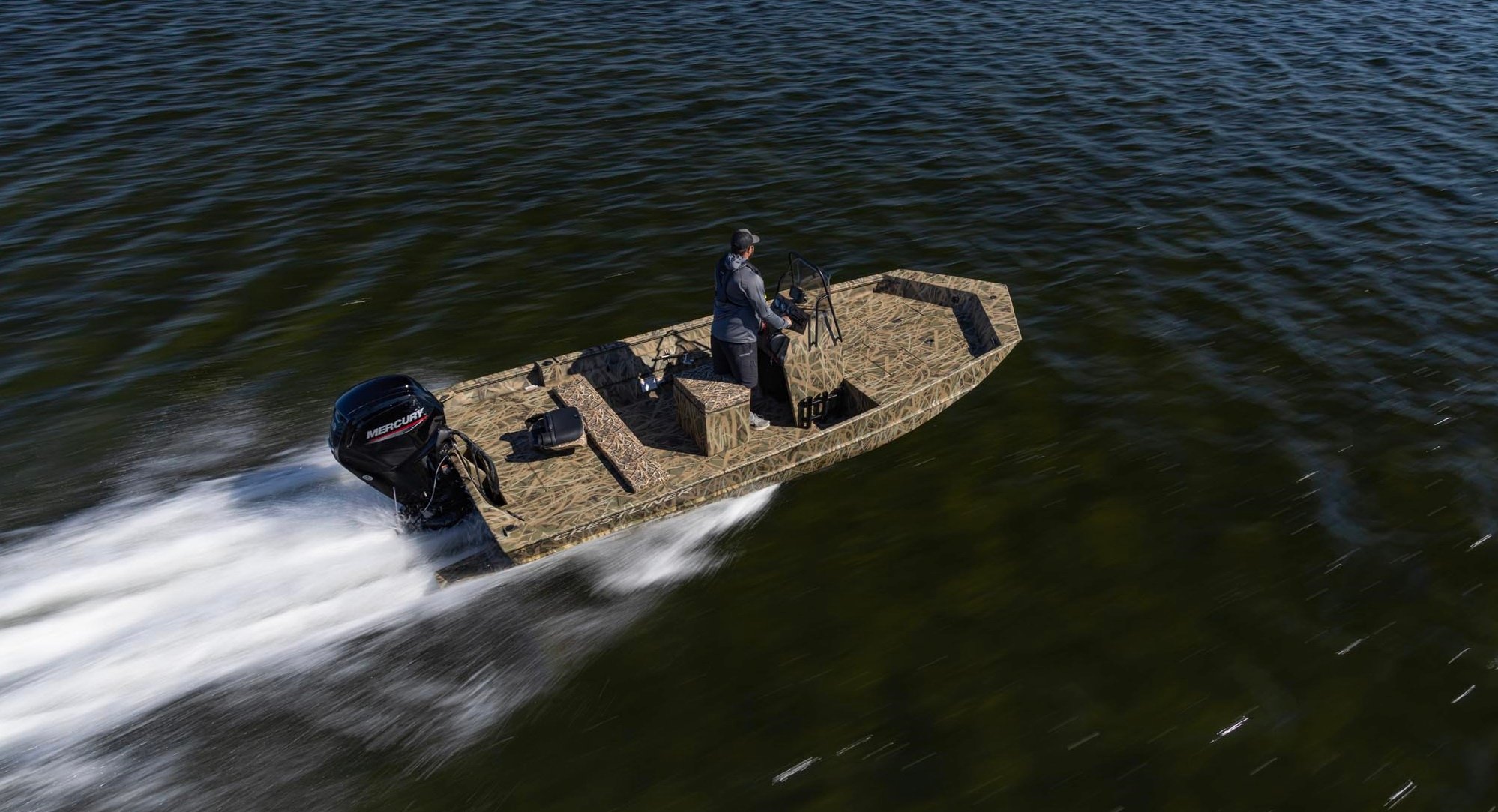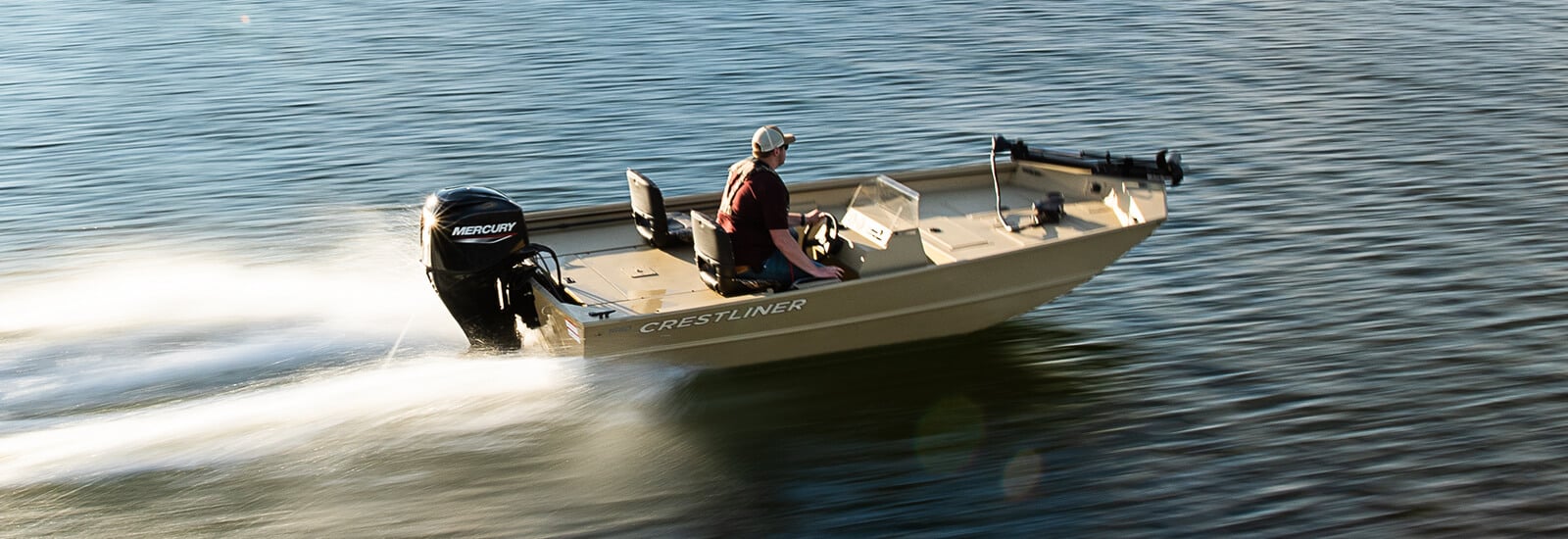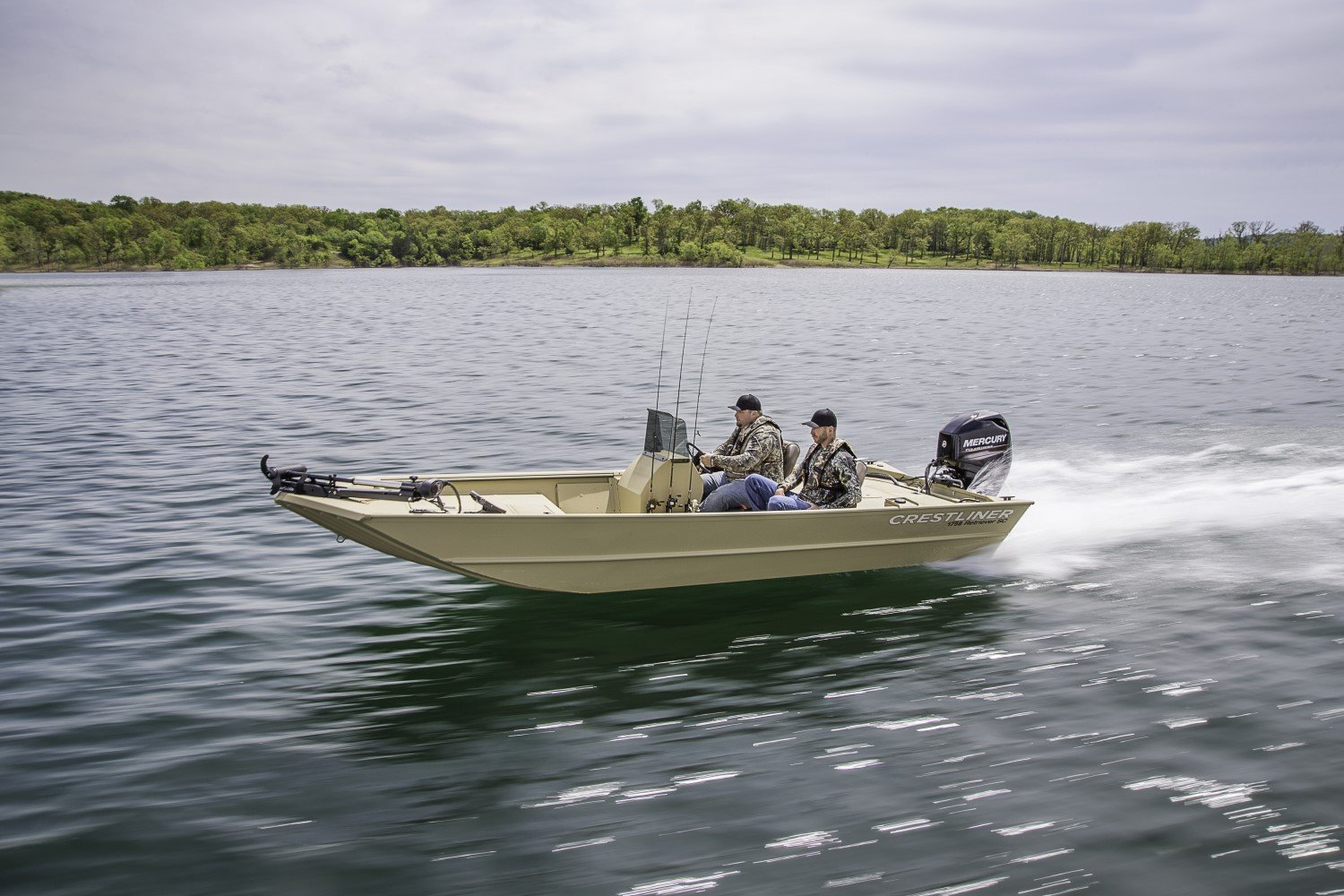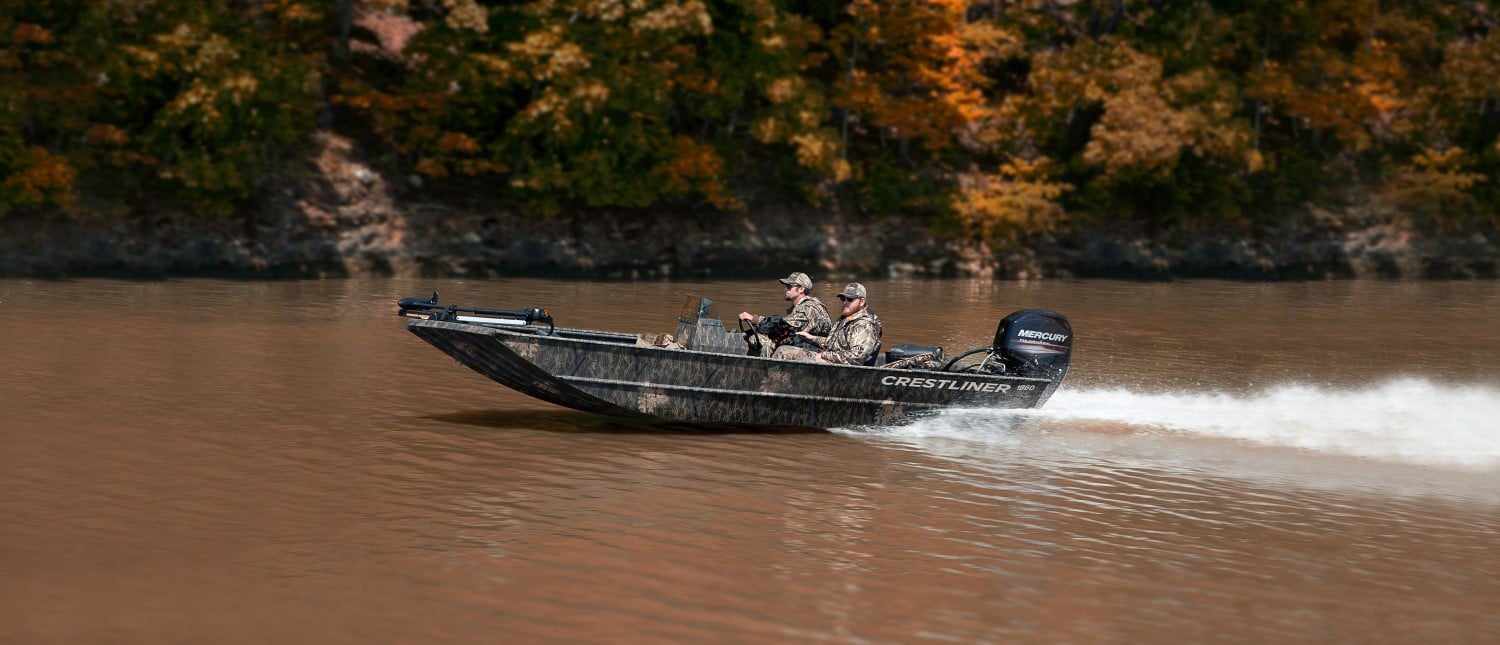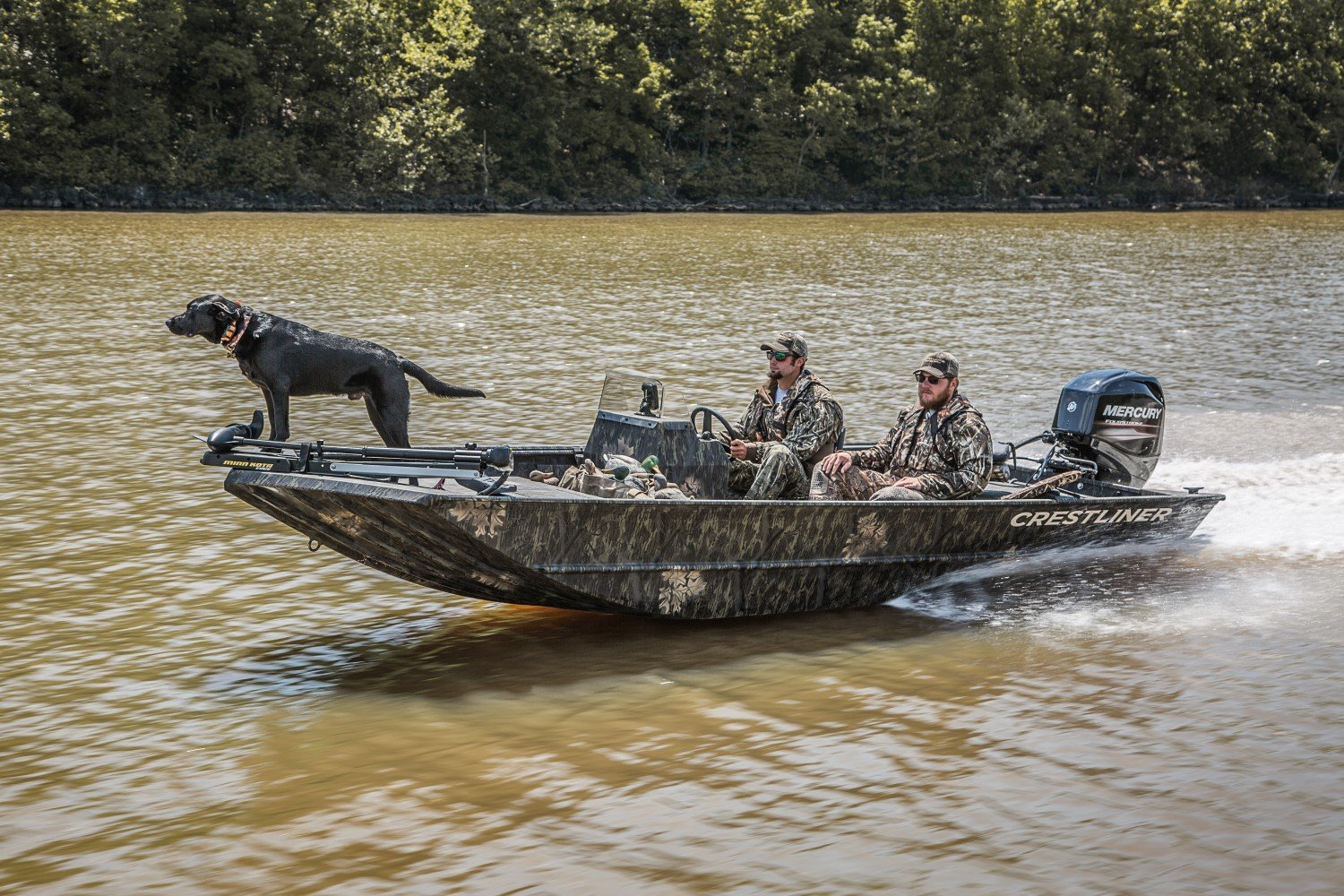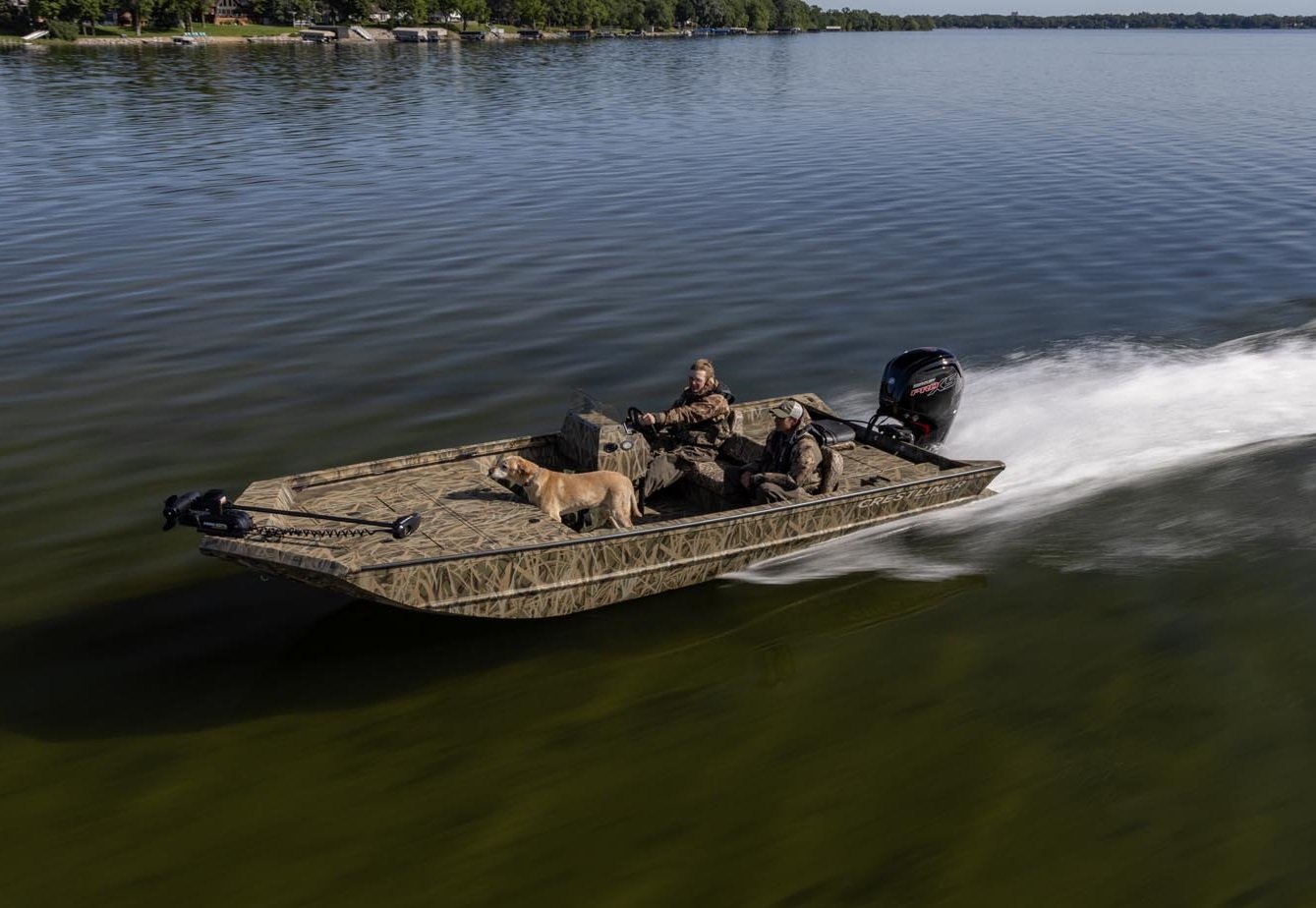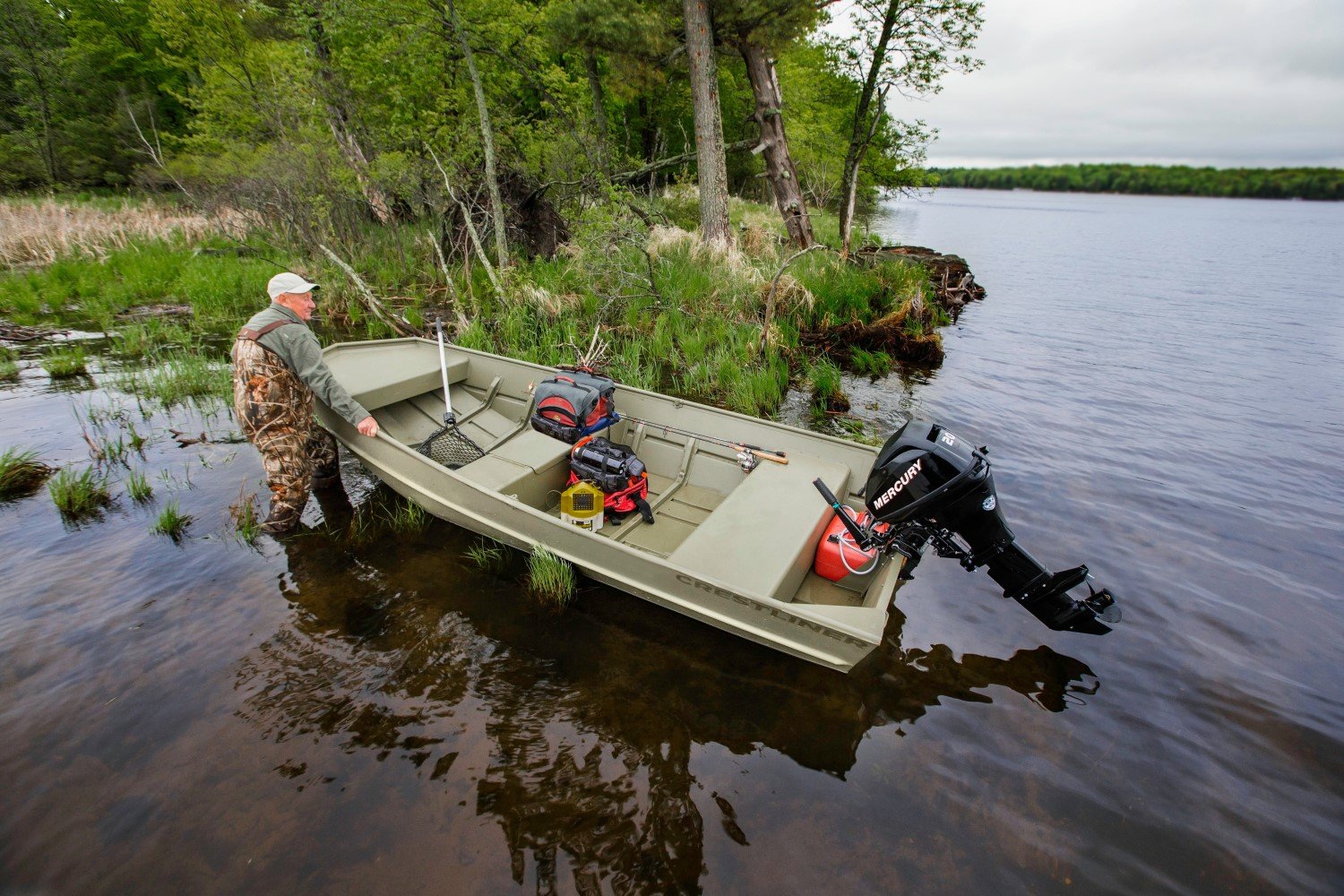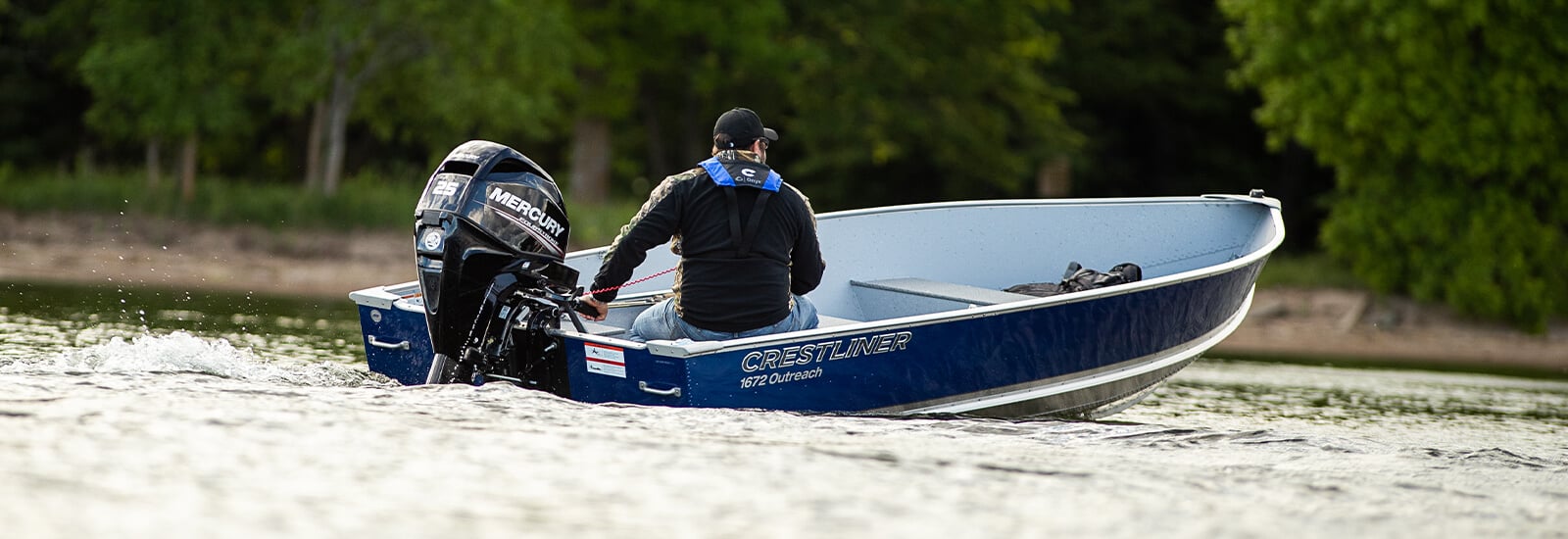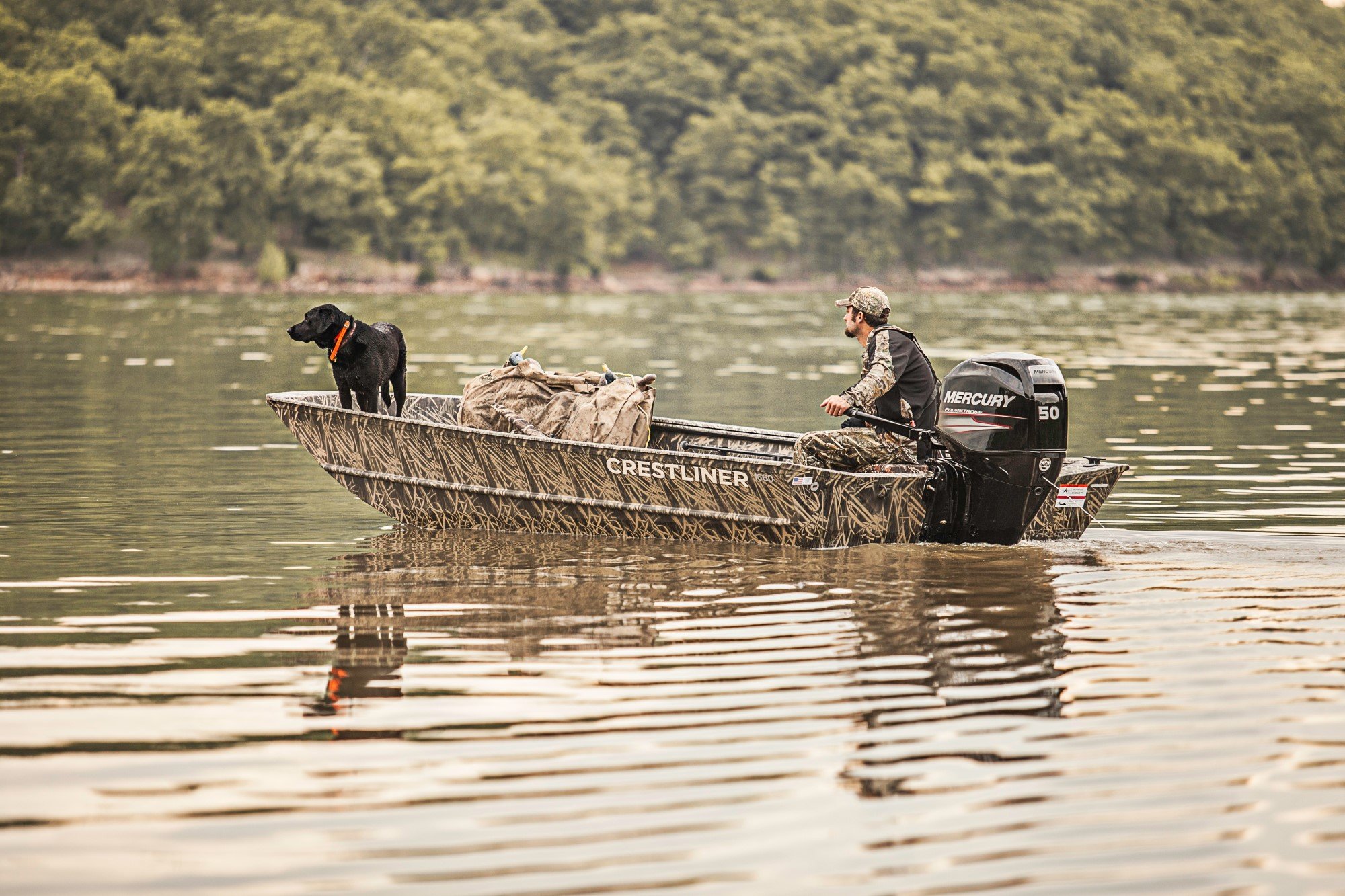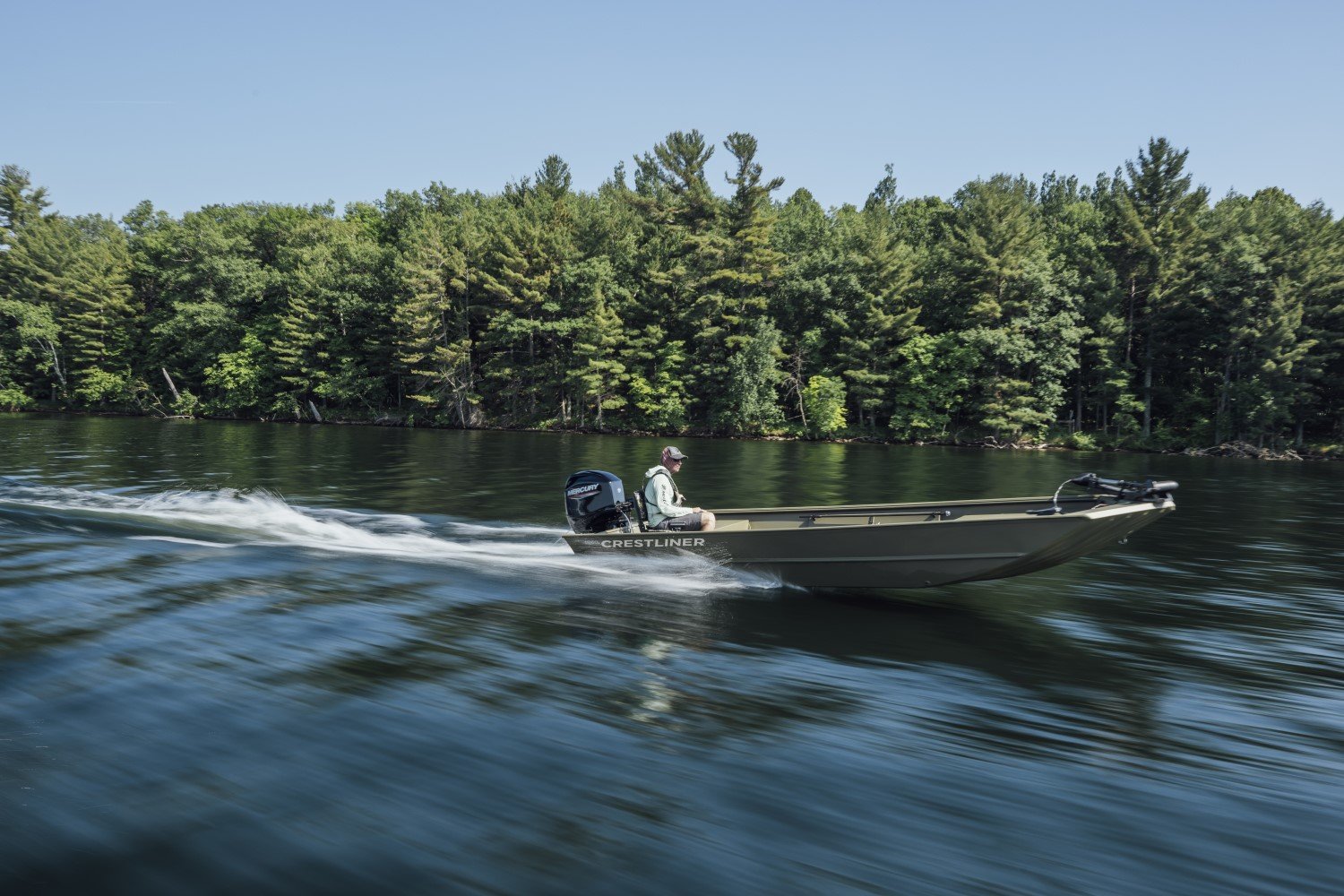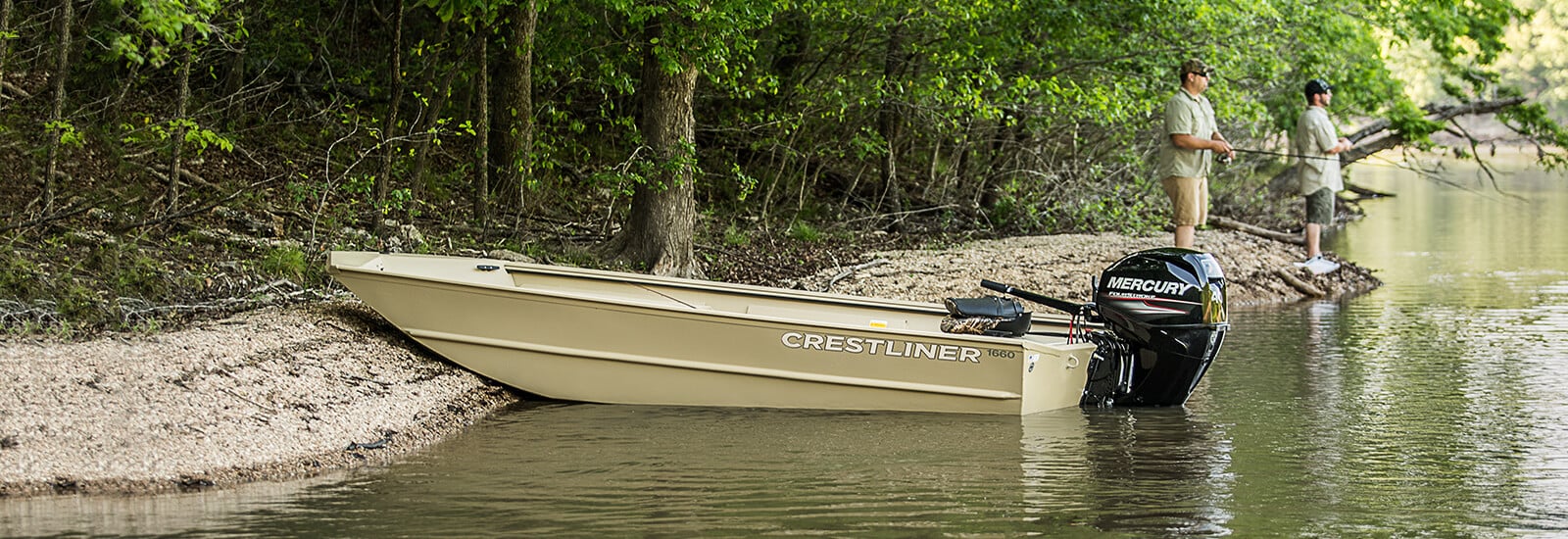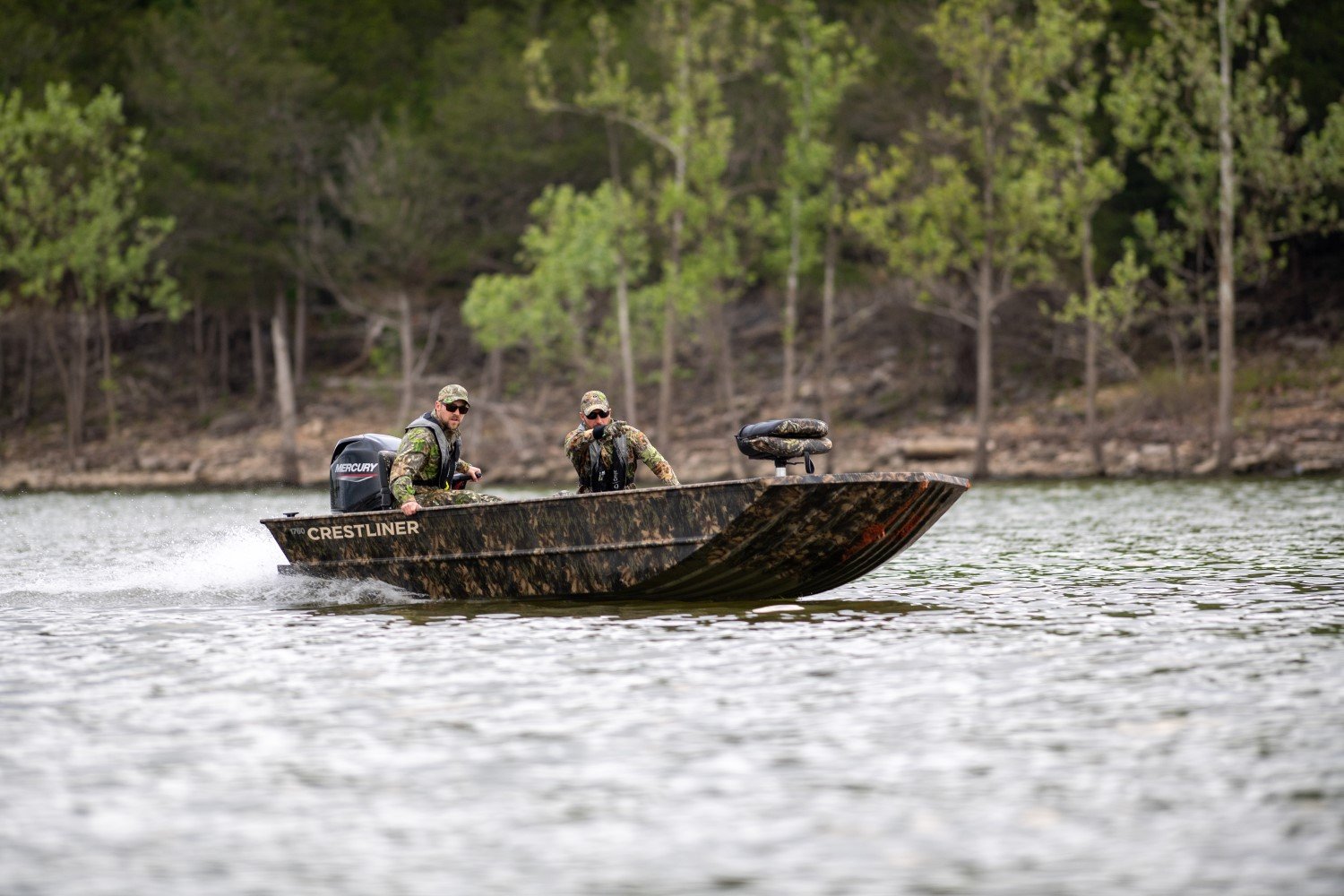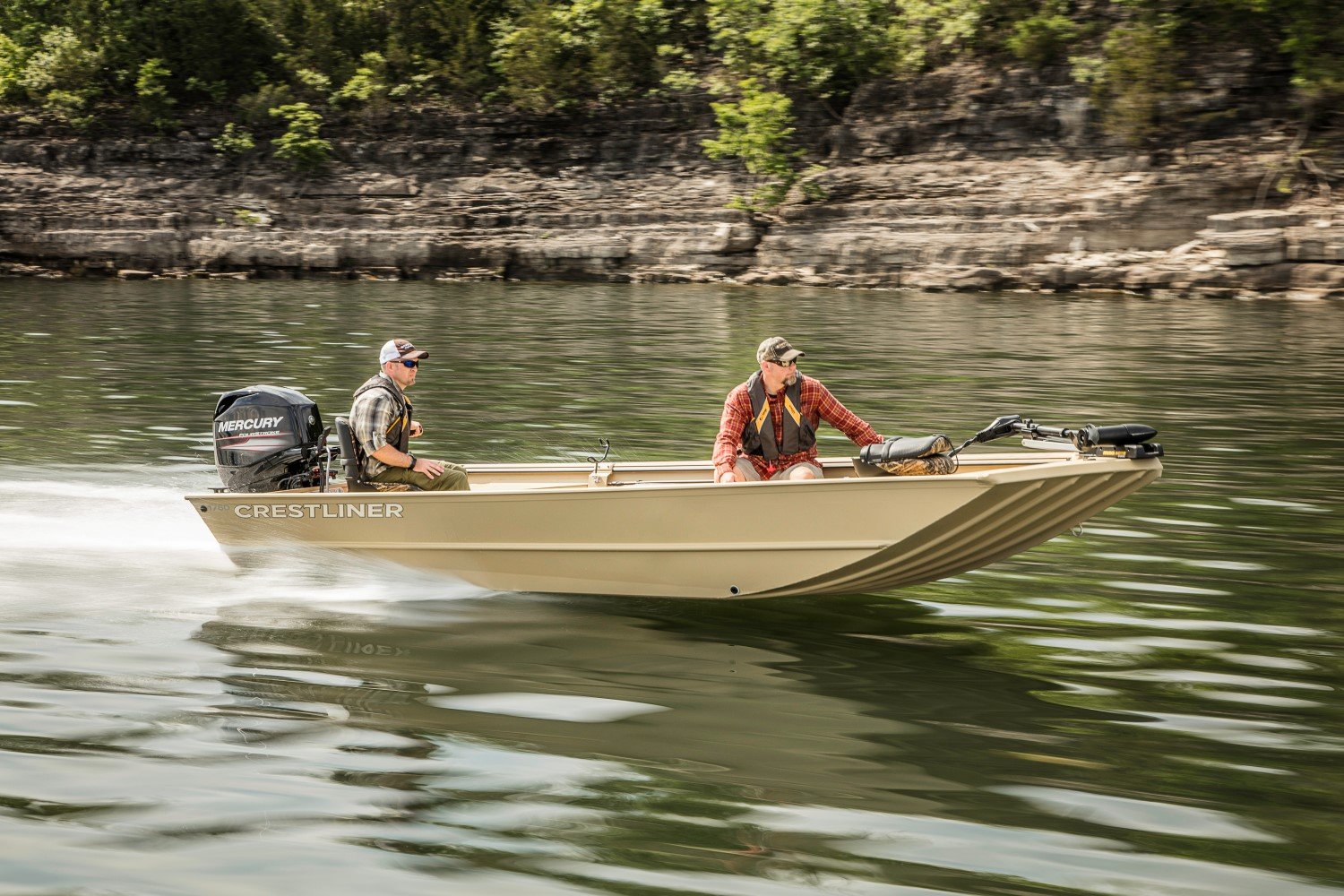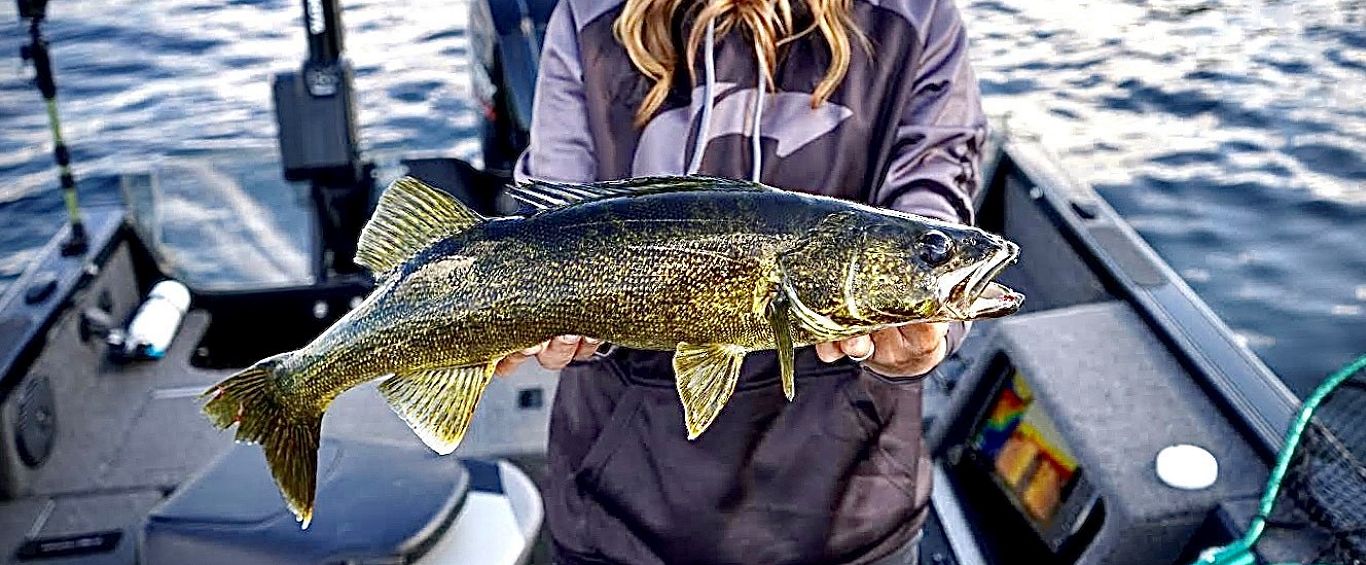Walleye are a top target for many anglers, and while basic intel is always easy to scrounge up, advanced walleye fishing tips are a completely different thing. To get the straight scoop we asked Crestliner Pro Staff Tyler and Sara Trampe, who fish from an 1850 Pro Tiller with a 90-hp Mercury four-stroke outboard. If you want to learn how to catch more walleye, tune in to what they have to say about walleye fishing during the different seasons.
Warm Weather Walleye Season Fishing Tips
Sara says she loves summer, but midsummer walleye can be downright frustrating to target. “They go from eating everything in spring to being stationary and basically having to be spoon-fed in summer,” she says. “But before the fish go from feeding frenzy to not, they move. We've found that when walleyes are moving from spring shallow patterns to summer weed beds, they want a horizontal presentation. Walleyes are typically suspended off the bottom during this phase and a vertical presentation like a jig goes right past their location in the water column. Fish generally feed up, so you need to keep the bait above their heads. We like to use four- to five-inch baits that dive anywhere from four to 10 feet down. We've found the long, slender-bodied baits like Northland Fishing Tackle's Rumble shiner work best.”
Once water temps peak and walleye look for deeper holes and oxygen-rich weed beds, she advises matching the forage base in the lake and slowing your presentation. “The fish aren't willing to move as much and are consuming smaller, easier meals,” she says. “Try power corking for bigger ‘eyes with a slip bobber and jig head tipped with a minnow or leech. You can target schools by locating them with your electronics, then the slip bobber allows your bait to stay suspended in the strike zone for longer and the walleyes can't resist an easy meal just hanging around.”
Cool Weather Walleye Season Fishing Tips
Tyler says that fall and declining water temperatures mean it’s a great time to fish for big walleye. “Remember that the fish are not necessarily eating more often, but they are eating larger meals,” he notes. “Bigger minnows such as five- to seven-inch suckers, chubs and daces are preferred over your standard fatheads and shiners. This matches with nature because the young of the year fry have had an entire season to grow and are larger than say they were just weeks earlier. So, the walleye are looking to eat a steak dinner instead of hors d’ oeuvres.”
Tyler adds that his favorite fall technique when walleyes are holding up in anticipation for winter is vertical jigging deeper structure. “Our preferred set up is 10- to 20-pound braided line tipped with an 18- to 24-inch fluorocarbon leader, tied directly to a jig head,” he says. “The key is instead of using a uni knot to connect the fluoro to the braid, we use a barrel swivel. This serves two purposes: it’s easier to tie both leader and your braid to, and it basically eliminates line twists and loops in your spool. When vertical jigging with bigger baits they tend to spin and twist all over, so preventing this is key to a hassle-free day on the water.
Whatever season they’re fishing, the Trampes agree that their 1850 Pro Tiller Crestliner fishing boat is ideal for targeting walleye. “The wider beam provides greater stability than other 18-foot tiller models I’ve driven,” says Sara, “which makes me feel more comfortable and confident on the water during a good walleye chop. The wider beam also gives way for more room, and fishing two up front works great.” Tyler adds that the handling is great for precise presentation for finicky walleyes, but the boat can also become a complete battle station for casting all day for muskies thanks to its huge casting deck in the bow.
So, are you ready to get out there and hit the water in search of walleye? Pay heed to these tips from Tyler and Sara, and the next time you go fishing for walleye you can bank on putting a bend in those rods.
For more info on this topic, read Crestliner pro tips for catching walleye in the spring.

